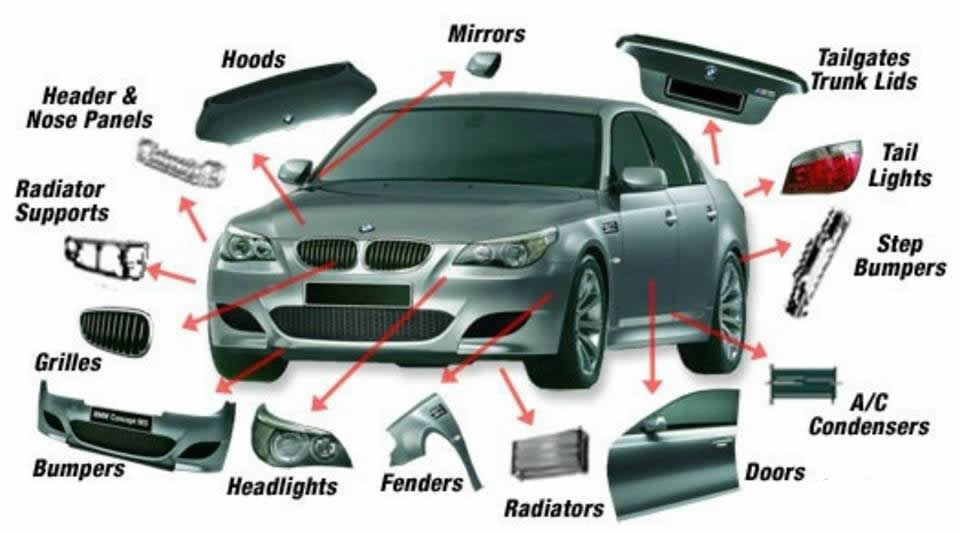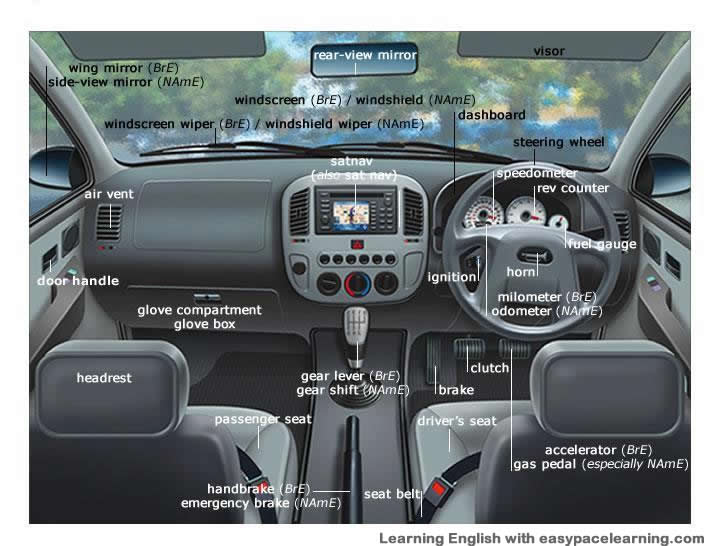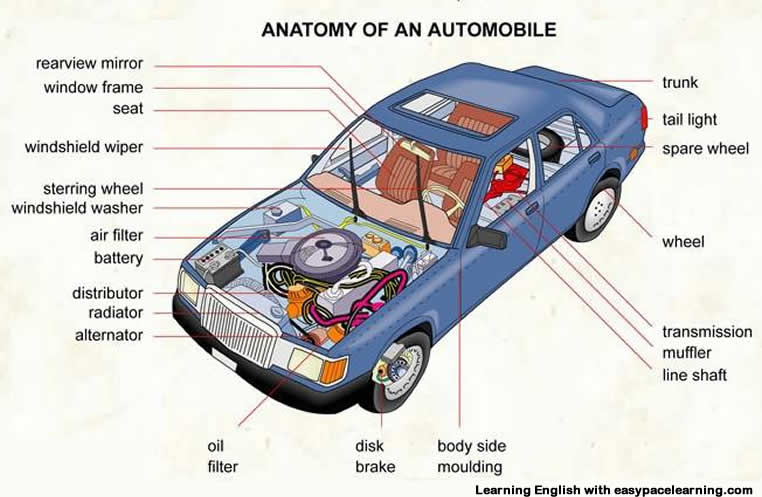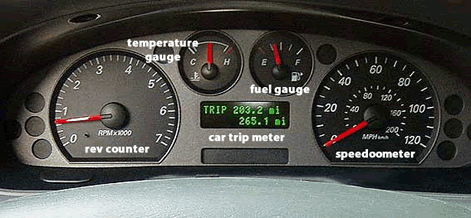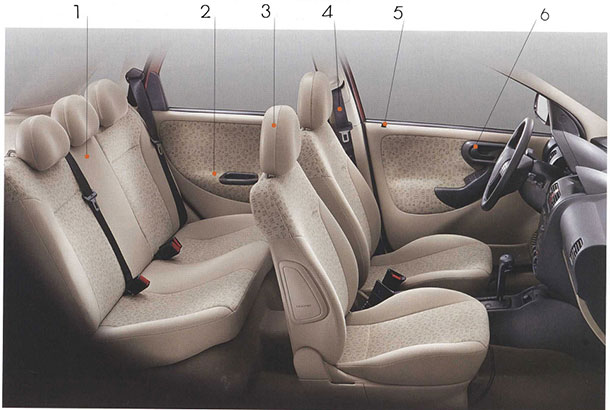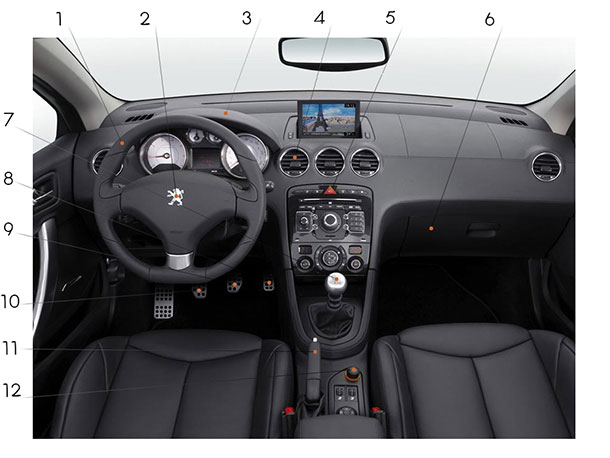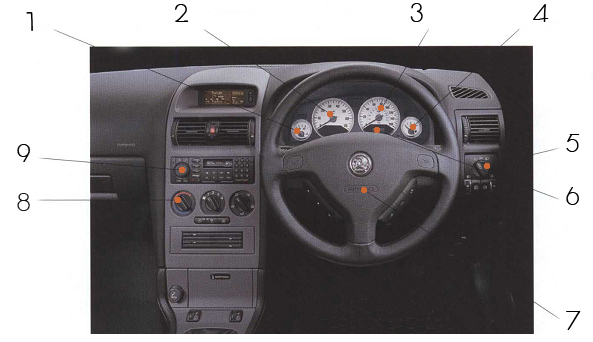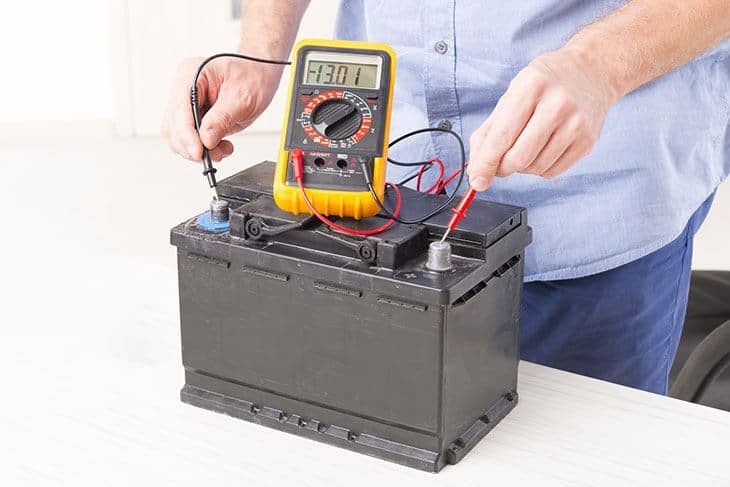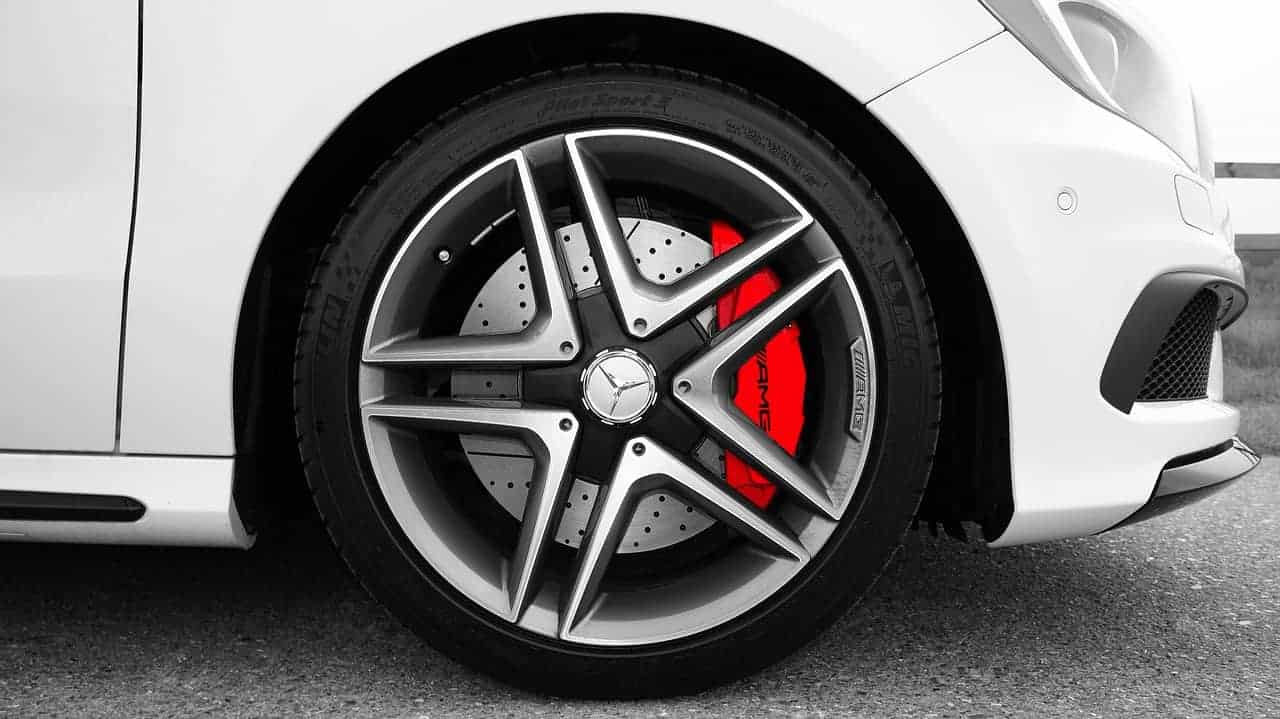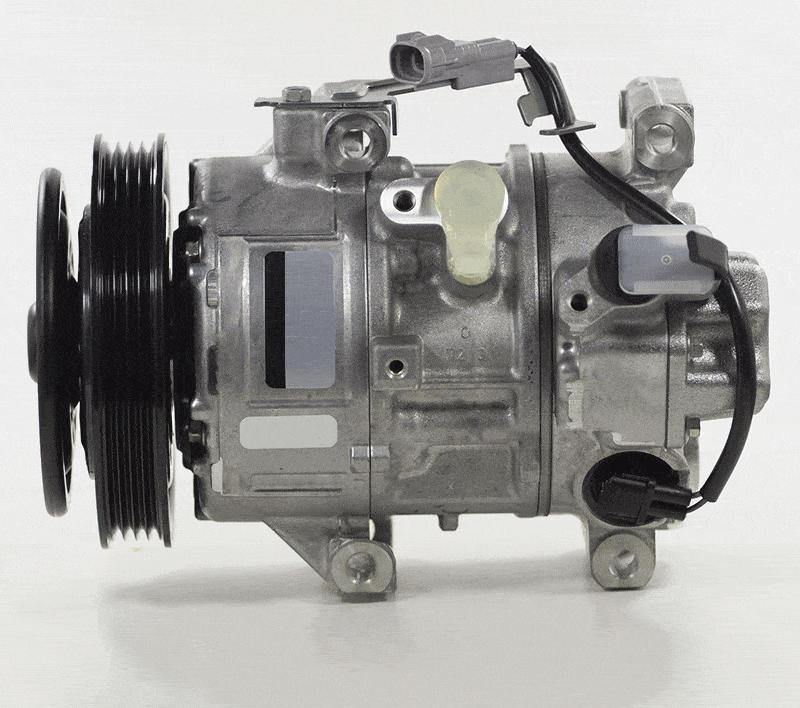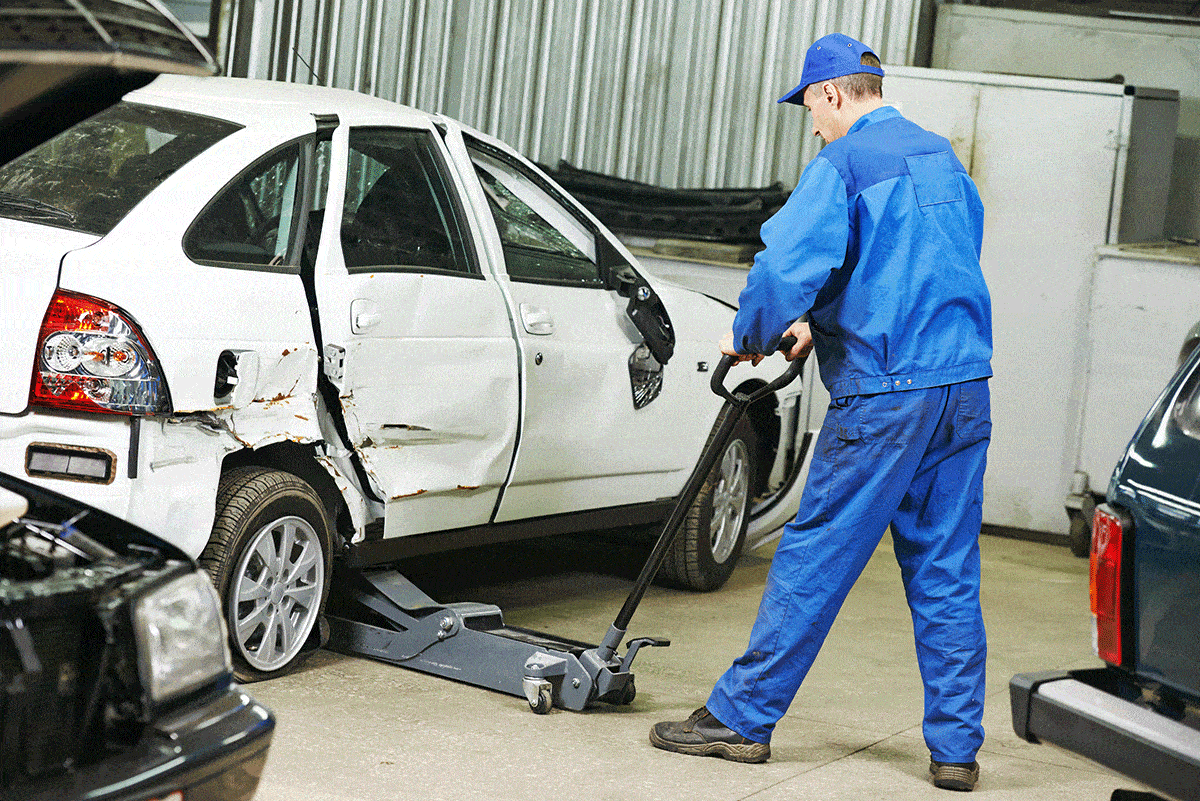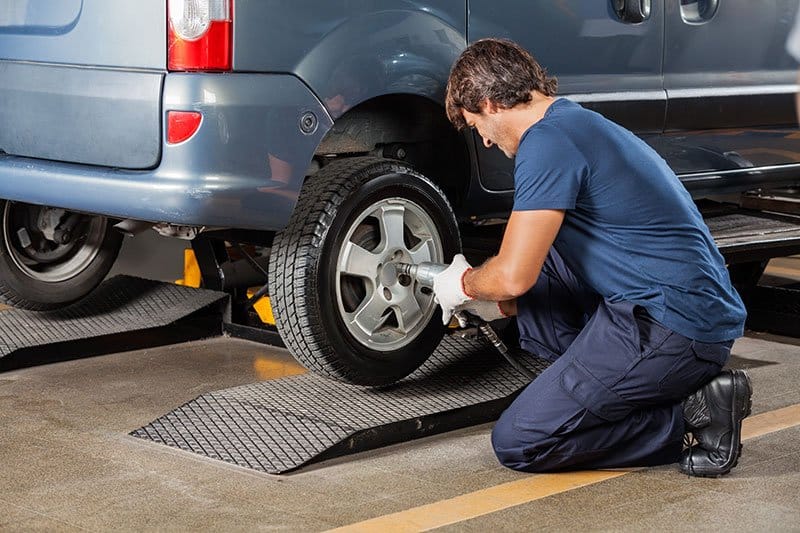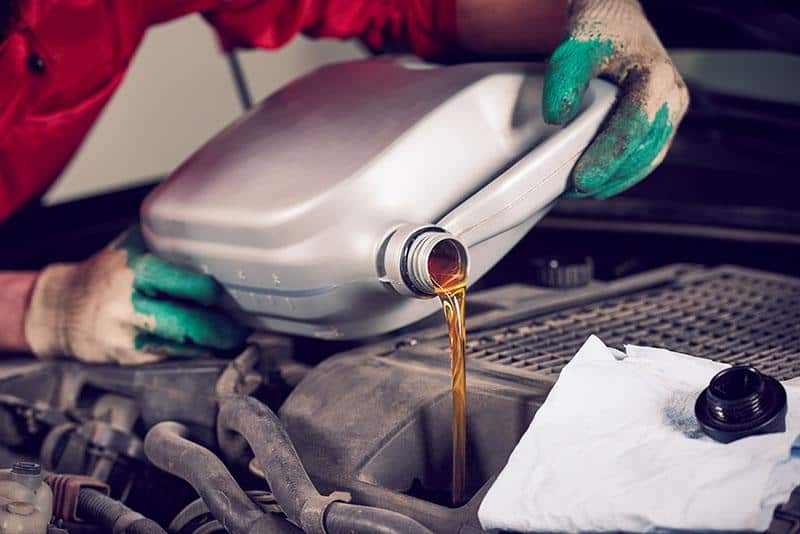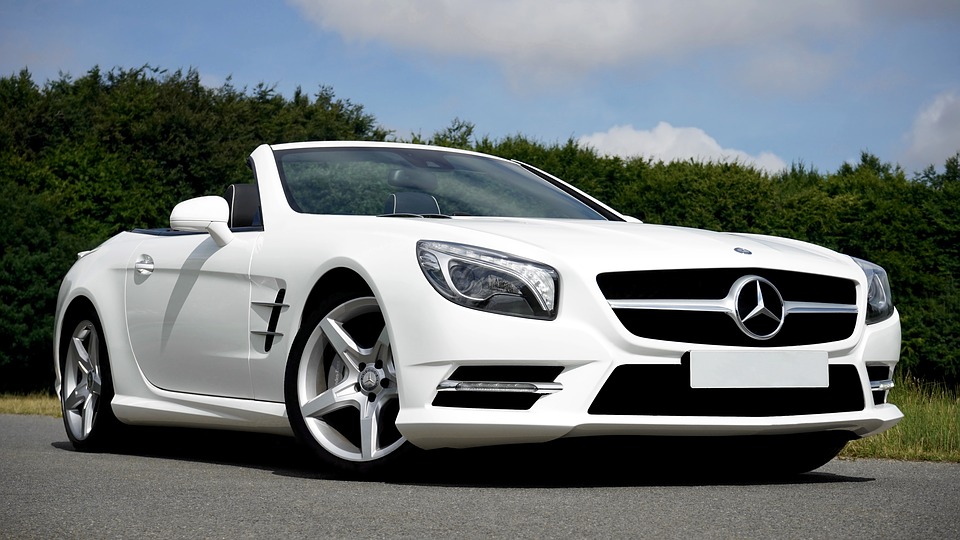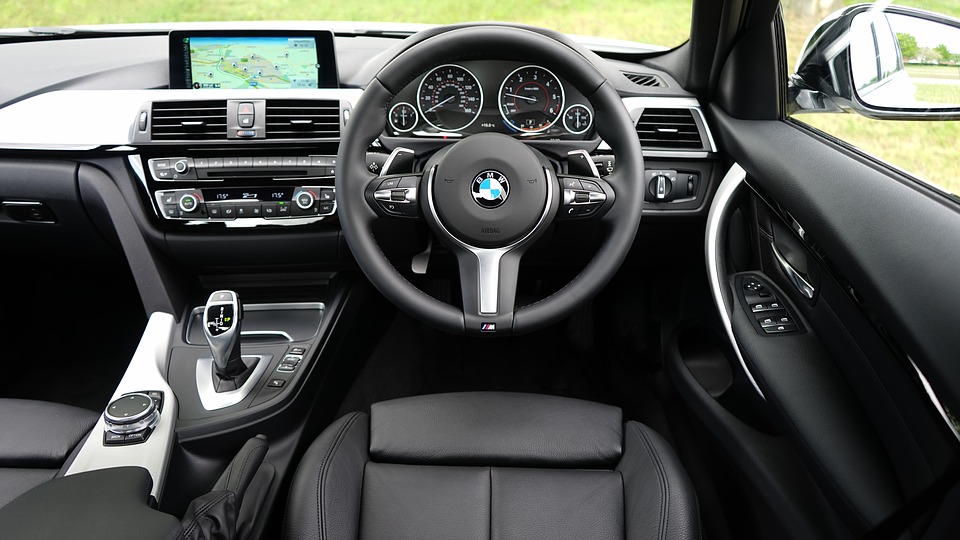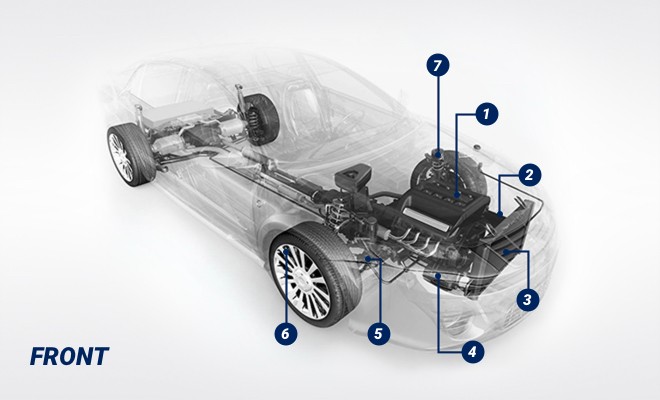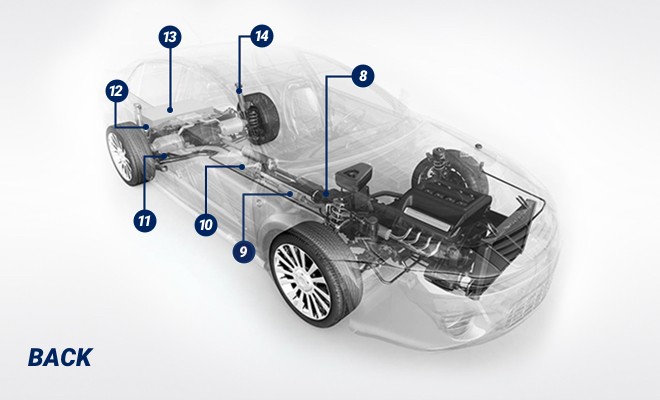Parts of a car
Parts of a car
Easy Pace Learning
Grammar
Basics
Lessons and exercises
Exercises
Car parts vocabulary list learn the English words for car parts using pictures
Learning car parts vocabulary using pictures English lesson
Learning the vocabulary for inside and outside a car using pictures. The first picture shows the various parts for the outside of a BMW car.
Outside a car parts vocabulary
In British English the hood is called a bonnet and the trunk is called a boot.
Car parts vocabulary for in the inside of a car
The following picture shows the vocabulary for various parts for inside a car. BrE = British English NAmE = Native American.
Vocabulary for parts of a car inside and outside
This last picture shows various parts of inside and outside a car that was not included in the previous pictures.
Car parts with brief description
Gear lever
Used to change gears in a car.
Seat belt
A car has seat belts in the front and back. You use the verb fasten, when you put your seat belt. John fastened is seat belt before driving off.
Steering wheel
You use the steering wheel to control the direction of the car (steer the car).
Windscreen
The windscreen is the big window at the front of the car.
Windscreen wipers
Are the things used when it is raining, snowing or clean dirt of the windscreen.
They are used when driving at night and when it is raining, snow or fog.
Tail lights
The lights that are at the back of the car are call lights. The orange light are called indicators and are used when the car is turning left or right. The white part is called the reverse light and lights up when the car is reversing backwards. The red part is used when the head lights are being used so other drivers can see the car in front of them at night time or poor driving conditions. It is also called a brake light and is used when the car is using the brake pedal.
Speedometer
The speedometer shows how fast the person driving the car is driving.
Fuel gauge
Used to show how much petrol or diesel the car has left
Temperature gauge
Shows how hot the cars engine is.
Car trip meter
This shows the driver how many miles the journey has took.
Rev counter
The rev counter is used to help you change gear and can be used for better fuel economy.
Lessons that might be related to this one
This is the first lesson on cars
Print the English lesson on learning the vocabulary for car parts
Автомобильная лексика на английском: устройство автомобиля, дорога, вождение, ДТП
Слова на тему «Автомобиль» — это довольно большой слой лексики в английском языке. К нему относятся многочисленные термины об устройстве автомобиля, дороге, правилах дорожного движения. В этой статье мы рассмотрим наиболее общеупотребительную лексику, которую используют не автомеханики, а все, кто водят машину.
Подборка слова и выражений разделена на пять тем. Первые три — это существительные (части автомобиля, детали салона, дорога), я не стал добавлять к ним примеры предложений, т. к. с их употреблением не должно возникнуть трудностей. Глаголы на тему «Вождение», «Авария» приведены с примерами, чтобы было понятнее, как они употребляются.
Обратите внимание, что в автомобильная лексика на английском содержит много слов, отличающихся в британском и американском вариантах языка. Они отмечены аббревиатурами UK (британский вариант) и US (американский вариант).
Содержание:
Пройдите тест на уровень английского:
Основные части автомобиля на английском
| headlights | фары |
| low beams | ближние фары |
| high beams | дальние фары |
| bumper (UK) | бампер (UK) |
| fender (US) | бампер (US) |
| windshield (US) | лобовое стекло (US) |
| windscreen (UK) | лобовое стекло (UK) |
| wipers (windshield wipers) | дворники |
| boot (UK) | багажник (UK) |
| trunk (US) | багажник (US) |
| rear view mirror | зеркало заднего вида |
| side mirrors (sideview mirrors) | боковые зеркала |
| tyre (UK) | камера, шина (UK) |
| tire (US) | камера, шина (US) |
| flat tire | спущенное колесо |
| wheel | колесо |
| steering wheel | руль |
| bonnet (UK) | крыша, капот (UK) |
| hood (US) | крыша, капот (US) |
| tank | бак |
| taillights | задние фары |
| door | дверь |
| silencer (UK) | глушитель (UK) |
| muffler (US) | глушитель (US) |
| spare parts | запчасти |
| spare tire | запасное колесо |
| petrol (UK) | бензин (UK) |
| gas (US) | бензин (US) |
| licence plate | номерной знак |
| licence plate number | номер автомобиля |
| make | марка автомобиля |
| model | модель автомобиля |
Примечания:
- Со словом fender (бампер) есть интересное выражение fender-bender (to bend — гнуть). Так называют маленькое ДТП с незначительными повреждениями автомобиля. Номер машины по-другому, более официально, может называться vehicle registration number. В разговорной так длинно обычно не говорят, предпочитая варианты: registration number, plate number, licence plate number, licence plate. Вам могут встретиться слова licenSe и licenCe. Во всех вариантах английского, кроме американского, licenCe — это существительное, а licenSe — это глагол. В американском английском не используется слово licenCe, а слово licenSe может быть и глаголом, и существительным. В связи с этим номер автомобиля может называться license plate (США) или licence plate (другие страны).
В автомобиле (детали салона)
| dashboard | приборная панель |
| back seat | заднее сиденье |
| front seat | передне сиденье |
| seatbelt | ремень безопасности |
| door lock | дверной замок |
| door handle | дверная ручка |
| glovebox (glovie) | бардачок |
| horn | гудок |
| accelerator | педаль газа |
| brake | педаль тормоза |
| clutch | педаль сцепления |
| handbrake | ручной тормоз |
| lighter | прикуриватель |
| manual transmission (UK) | ручная коробка передач (UK) |
| standart (US) | ручная коробка передач (US) |
| automatic transmission | автоматическая коробка передач |
| gearshift | рычаг переключения передач (ручн.) |
| gear selector | рычаг переключения передач (на автомат. коробке) |
| airbag | воздушная подушка |
- horn — это сам гудок, сигналить — to honk (the horn). Со словом back seat (заднее сиденье) есть выражение back seat driver — буквально, «водитель на заднем сиденье». Так говорят о пассажире, который подсказывает водителю, как ехать, а также, в более широком смысле, о человеке, который любит объяснять «как правильно», хотя сам не участвует в процессе.
Английские слова на тему «Дорога»
| road | дорога |
| route | трасса, шоссе |
| motorway (UK) | магистраль (UK) |
| highway (US) | магистраль (US) |
| onramp | выезд на магистраль |
| lane | полоса движения |
| lane marking (road surface marking) | дорожная разметка |
| speed bump | лежачий полицейский |
| crossroad (UK) | перекресток (UK) |
| intersection (US) | перекресток (US) |
| road sign | дорожный знак |
| traffic light | светофор |
| pavement (UK) | тротуар (UK) |
| sidewalk (US) | тротуар (US) |
| crosswalk | пешеходный переход |
| pedestrian | пешеход |
| car park (UK) | парковка (UK) |
| parking lot (US) | парковка (US) |
| parking space | парковочное место |
| traffic | дорожное движение |
| traffic jam | пробка |
| rush hour | час пик |
Выражения на тему «Вождение автомобиля»
- to buckle up — пристегнуться
Make sure that the passengers are buckled up. — Убедитесь, что пассажиры пристегнуты.
Fasten your seatbelts, please. — Пожалуйста, пристегните ремни.
Do you know how to brake? — А ты тормозить умеешь?
I had to hit the brakes when I saw a pedestrian. — Мне пришлось затормозить, когда я увидел пешехода.
Can you help me? My car stalled. — Вы можете мне помочь? Моя машина заглохла.
Shift into first and step on the accelerator. — Переключитесь на первую скорость и нажмите на газ.
You can speed up on a highway. — Ты можешь прибавить скорости на магистрали.
Please, reverse carefully. There is a lemo behind us. — Пожалуйста, сдавай назад осторожно. Там позади нас лимузин.
He could not hear the car honking behind him. — Он не слышал, как сзади гудела машина.
He struggled with the steering wheel, attempting to make U-turn. — Он боролся с рулем, пытаясь совершить резкий разворот.
We can drive where we want, but we have to follow the speed limit. — Мы можем ездить, где хотим, но обязаны соблюдать скоростной режим.
Don’t exceed the speed limit, speeding may cause collisions with animals. — Не превышайте скорость, превышение скорости может привести к столкновению с животными.
I was in hurry and ran a red light. — Я торопился и проехал на красный свет.
- to tailgate — ехать впритык (к машине спереди), не соблюдать дистанцию
Tailgating causes many car accidents. — Несоблюдение дистанции приводит ко многим авариям.
- to pull over (off) — остановиться (и съехать с проезжей части)
If your car starts to overheat, pull over immediately. — Если ваша машина начала перегреваться, немедленно остановитесь.
The bus pulled out of the parking lot. — Автобус выехал с парковки.
I speeded up and someone cut me off. — Я прибавил газу, и кто-то меня подрезал.
Sorry, you can’t park here. — Извините, здесь нельзя парковаться.
The «Do Not Pass» sign indicates that passing a car is prohibited. — Знак «Обгон запрещен» обозначает, что нельзя обгонять машину.
- to change lanes — переехать на другую полосу, перестроиться
The driver decided to change lanes but didn’t make sure that it was safe to do. — Водитель решил перестроиться на другую полосу, но не убедился, что это безопасно.
Learn how to change gear first. — Сначала научитесь переключать передачу.
Where is the nearest gas station? We are running out of gas. — Где ближайшая заправка? У заканчивается бензин.
Always fill up the car before a long drive. — Всегда заправляйте машину перед долгой поездкой.
- to flag (someone) down \ wave someone down — тормозить машину (жестом)
The police officer flagged me down and asked for a drivers licence.
Get in! Get in the car! — Садись! Садись в машину!
I’d like to get out at the post office. — Я бы хотел выйти у почтового отделения.
Can you pick me up at nine o’clock? — Вы можете забрать меня в девять часов?
Drop him off at the nearest subway station. — Высадите его у ближайшей станции метро.
Never turn without indicating. — Никогда не поворачивай, не показывая поворот.
I shut the door and the cab drove off. — Я закрыл дверь и такси уехало.
- to give (someone) a lift (UK) — подвозить (UK) to give (someone) a ride (US) — подвозить (US)
Can you give me a ride, please? — Не могли бы меня подвезти?
Выражения на тему «Авария, проблемы с машиной»
- car accident (car crash) — автомобильная авария
In the beginning of the movie a few people died in a car accident. — В начале фильма несколько человек погибли в автомобильной аварии.
Sorry, I’m gonna be late, my car broke down. — Извини, я опоздаю, моя машина сломалась.
There is nothing you can do, call a tow truck. — Ты здесь ничего уже не сделаешь, вызывай эвакуатор.
The first time I was driving a car, I ran into a tree. — В первый раз, когда я водил машину, я врезался в дерево.
It looks like they are going to run over someone. — Кажется, они сейчас кого-нибудь переедут.
See those scratches? I got sideswiped by some idiot. — Видишь эти царапины? Какой-то идиот меня задел.
I broke suddenly and she rear-ended me. — Я резко затормозил, и она въехала в меня сзади.
- to veer into oncoming traffic — выехать (резко) на встречную полосу
His car veered into oncoming traffic and ran into a tractor. — Его машина свернула на встречную и врезалась в трактор.
- to drive on the wrong side of the road — ехать не на той стороне (по встречной)
And then I noticed that we were driving on the wrong side of the road. — И тут я заметил, что мы ехали по встречной полосе.
The driver lost control and the car ran into a brick wall. — Водитель не справился с управлением, и машина врезалась в кирпичную стену.
The car skidded on a patch of ice and veered into a snow bank. — Машину занесло на льду и вынесло в сугроб.
The driver was thrown from his car when it rolled over. — Водителя выбросило из машины, когда она перевернулась.
Distracted driving is the act of driving while engaged in other activities such as talking on the phone. — Невнимательное вождение — это вождение, при котором водитель занимается посторонними делами, такими как разговор по телефону.
She was hit and run but fortunately she was not heavily injured. — Ее сбила машина, которая затем скрылась, но, к счастью, она не получила тяжелых травм.
- to have a head-on collision — врезаться в лоб, совершить прямое столкновение
When Robert tried to pass a car he had a head-on collision with a truck. — Когда Роберт пытался обогнать машину, он совершил прямое столкновение с грузовиком.
I got a two years driving ban for drunk driving. — Меня лишили прав на два года за вождение в нетрезвом виде.
- to have a near miss — проскочить, едва не столкнувшись, чудом избежать аварии
I used to be a reckless driver until a had a near miss. — Я ездил неосторожно, пока едва не попал в аварию.
CAR Parts: Names of Parts of a Car with Pictures
Car Parts! List of different parts of a car in English with examples and pictures. If you are driving through an English speaking country and suddenly find yourself having car trouble, you are going to need to call for roadside assistance or take your car to the nearest garage. If this happens, you will find things will be much more easy if you are able to refer to the names of the different car parts.
In this section, you will be able to learn the English names of the parts of a car which will grow your vocabulary and help you in communicating
Car Parts
A car or automobile is a wheeled motor vehicle used for transportation.
Parts of a Car
Parts of a Car Image
Car Parts Names with Examples
Learn these names of auto parts to improve and enhance your vocabulary words in English.
Headlight
– The headlight on the near side isn’t working.
Mirror
– She glanced at herself in the mirror.
Window
– Do you mind if I open the window of this car?
Trunk (US)/ Boot (UK)
– The police found his body in the trunk of a car.
Brake light
– I will also make sure that my brake lights are operating properly.
Tire (US)/ Tyre (UK)
– A nail pierced the tire of his car.
Door
– Now I lock my car doors when I drive through town.
Hubcap
– Along with a new wheel design, new hubcaps were introduced.
Gas tank (US)/ Petrol tank (UK)
– Please fill up the gas tank.
Windshield (US)/ windscreen (UK)
– It is dangerous to drive with a dirty windshield.
Hood (US)/ Bonnet (UK)
– I’ll need to check under the bonnet.
Roof
– The stone made a dent in the roof of my car.
Turn signal/ Blinker
– We use turn signal when turning or changing lanes.
Bumper
– She started the car with a jerk and hit the bumper of the car in front.
Door handle
– My hand groped for the door handle.
Rear-view mirror
– She glanced in the rear-view mirror and saw the headlight of the traffic behind her.
Windshield wiper (US)/ Windscreen wiper (UK)
– The windshield wipers kept noisily slapping the body of the car.
License plate (US)/ Number plate (UK)
– Did anyone see the car’s license plate?
Car Parts Names | Picture
Car Parts Video
Transportation Vocabulary
List of transportation and vehicles vocabulary words in English with different categories.
Although almost everyone drives or is driven in a car on daily basis, most people do not know the basic car parts names and their functions . For an average person, a car is just a piece of metal on four wheels for getting around. In actuality, a car is more than just metal and wheels.
A car is made up of several component parts that work together to deliver power and eventual mobility to the car. In this article, Naijauto.com will discuss the basic car parts and their individual functions. But before that, lets’s have an overview of the parts of a car below.
Illustration of car parts on Audi (Photo credit: Audi AG)
| Number | Car parts |
|---|---|
| 0 | rear window/ backlight |
| 1 | number plate/ license plate |
| 2 | boot/ trunk |
| 3 | bumper |
| 4 | stop light/ brake light |
| 5 | reversing/ back-up light |
| 6 | front wheel/ front tyre/ front tire |
| 7 | side mirror/ side-view mirror/ outside rear-view mirror |
| 8 | door |
| 9 | door handle |
| 10 | side window |
| 11 | exhaust (pipe) |
| 12 | fog-light |
| 13 | headlight |
| 14 | windscreen |
| 15 | rear-view mirror |
| 16 | bonnet |
| 17 | turn signal |
A single car is made up of about 30,000 parts that function together to help the car move. However, this post will focus only on the basic and very essential car parts names and their functions.
1. Engine
Basi cally, the engine is the heart of the car. It is by far the most important part of any automobile, for without it, a car cannot move. An engine is made up of blocks, head, pistons and valves. Fuel enters the engine where it is combusted in the presence of air to produce an air-fuel mixture that helps to move the car.
The engine is, of course, the most important part of a car
2. Battery
The battery provides the electricity needed to power all the electrical components of a car. Even with the engine in good condition, without the battery, the car won’t run.
A car battery is often compared with the heart of human beings
3. Alternator
The alternator is a functional part of a car that generates power for the electrical components of a car. What it does in actuality is to charge the battery of a car which then provides the electricity needed to power the car accessories such as radio, headlights, brake lights and other electrical parts of a car such as door locks and power windows.
This is where a car alternator locates under the hood
4. Radiator
Given that a car engine is basically made up of metal grinding against metal, the engine is usually hot. The radiator functions to cool down the amount of heat generated by the car engine during the course of its operation. The radiator is usually located in the front of the engine compartment. Other component parts that work together with the radiator to keep the car engine cool include the thermostat, water pump and hoses.
The car radiator is to cool down the car engine
5. Ignition system
A car ignition system is made up of spark plugs, distributor, ignition wires and coils. The ignition system brings about the fuel combustion which occurs in the presence of air.
Without the ignition, your car won’t start
6. Suspension
A car suspension functions to foster friction between the car tyres and the road. It helps to give the steering more stability.
You can see a suspension system here when separated from the car body
7. Transmission
The transmission is a gear system comprising of gears and gear trains which work together with the engine’s torque to change the gear and power of the car.
An automati c transmission gearshift
8. Chassis
The chasis is the frame work of the car upon which the other car parts are screwed unto.
The chassis forms the basic shape of your car
9. Muffler
The muffler is a series of chambers enclosed in a metal container which functions to silence the noise produced by the car engine. The muffler contributes to a quiet riding experience in a car.
Car muffler belongs to car exhaust system
10. Brakes
The function of the brakes is to slow down and to bring the car to a total halt as the need might be. A brake is made up of different components such as disk and drum brakes, master cylinder, power booster, and anti-lock brakes. Brakes are found on all four wheels of a car and are the primary safety feature of every car.
Any problem with car brake system should be fixed immediately
11. Catalytic converter
It is the catalytic converter that controls gas emissions from the car. It functions by converting harmful gases into less harmful ones before they are emitted into the environment.
Car catalytic converter serves as an environment protector
12. Fuel tank
The fuel tank is the storage part of the car. It stores the petrol that powers the car. It is usually located in safe area where it cannot be mangled during a crash.
The car fuel tank must be kept safe in case of a crash
13. Exhaust pipe
The exhaust pipe is the part of the car exhaust system that carries exhaust fumes from the muffler to the outside.
You can easily locate a car exhaust pipe
You’ve come to the end of this article highlighting basic Car parts names and their functions.
Car’s Anatomy. Устройство автомобиля на английском языке
I know a lot about cars, man. I can look at any car’s headlights and tell you exactly which way it’s coming.
Чувак, я знаю все о машинах! Я могу посмотреть на передние фары любой машины и сказать, в какую сторону она движется.
Как и автор эпиграфа, я мало что знаю о том, как водить машину, как поменять покрышку, даже по какому номеру звонить в случае поломки машины, но я могу помочь вам разобраться со словами, связанными с автомобильной темой на английском языке 🙂 Какие бывают машины? Из каких частей они состоят? Давайте разберемся вместе!
Типы автомобилей на английском языке
Не берусь говорить за всех, но уверена, что огромное многообразие машин может вызывать смятение у девушек и женщин: кажется, что типов машин так много, что запомнить все просто невозможно. Спешу вас уверить, что типов кузова не так уж много, и уже в зависимости от типа каждая компания дорабатывает свой уникальный дизайн. А кузовы бывают такие:
| Слово | Перевод | Картинка |
|---|---|---|
| Saloon | Седан |  |
| Hatchback | Хэтчбэк | 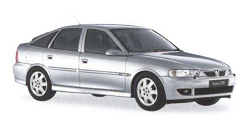 |
| Estate | Универсал | 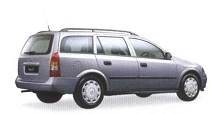 |
| Coupe | Купе | 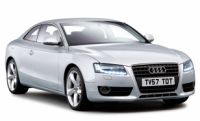 |
| Convertible | Кабриолет |  |
| Roadster | Родстер | 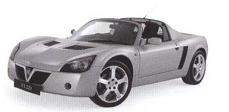 |
| Sport Utility Vehicle (SUV) | Внедорожник | 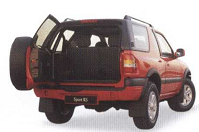 |
| Pickup | Пикап | 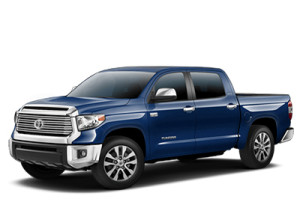 |
| Crossover Utility Vehicle (CUV) | Кроссовер | 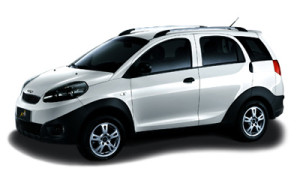 |
| Limousine | Лимузин |  |
| People carrier (minivan) Multi-purpose vehicles (MPVs) | Минивэн УПВ – универсал повышенной вместимости | 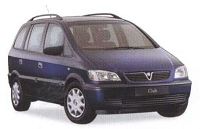 |
| Van | Фургон | 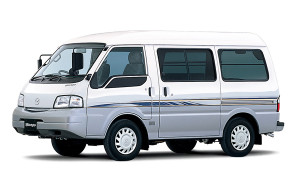 |
| Lorry/Truck | Грузовик | 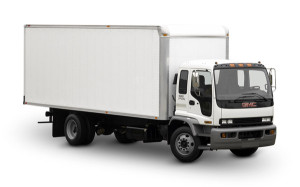 |
Внешние элементы автомобиля на английском языке
Внешнее строение автомобилей приблизительно одинаковое: везде должны быть капот, колеса, кузов. Мы выделим такие части:
Элементы салона и приборы управления автомобилем на английском языке
Естественно, что интерьер каждой машины уникален в своем роде, но есть определенные элементы внутреннего пространства, которые можно встретить в любом автомобиле:
А теперь посмотрим на переднюю панель:
Кроме того, если мы будем более пристально разглядывать приборы в салоне автомобиля, то мы обязательно должны указать:
Список английских слов на тему «Автомобиль» с переводом
Далее предлагаем вашему вниманию более полный список слов, которые могут быть интересны автолюбителям, изучающим английский язык:
| Слово | Перевод |
|---|---|
| Типы кузовов | |
| Convertible | Кабриолет |
| Coupe | Купе |
| Crossover Utility Vehicle (CUV) | Кроссовер |
| Estate | Универсал |
| Hatchback | Хэтчбек |
| Limousine | Лимузин |
| Lorry (BrE), truck (AmE) | Грузовик |
| People carrier (minivan) / Multi-purpose vehicles (MPVs) | Минивэн / УПВ – универсал повышенной вместимости |
| Pickup | Пикап |
| Roadster | Родстер |
| Sedan | Седан |
| Sport Utility Vehicle (SUV) | Внедорожник |
| Van | Фургон |
| Внешние элементы | |
| Aerial | Антенна |
| Back door | Задняя дверь |
| Backup lights | Фонари заднего хода |
| Body | Кузов |
| Bonnet (BrE), hood (AmE) | Капот |
| Boot (BrE), trunk (AmE) | Багажник |
| Brake lights, stop lights | Стоп-сигналы |
| Bulbs | Лампы |
| Bumper | Бампер |
| Caravan (BrE), trailer (AmE) | Прицеп |
| Door handle | Ручка двери |
| Exhaust pipe, tail pipe | Выхлопная труба |
| Fog lights | Противотуманные фары |
| Front door | Передняя дверь |
| Front wheel | Переднее колесо |
| Grill | Решетка радиатора |
| Headlights | Передние фары |
| High beam | Дальний свет |
| Hubcap | Колпак колеса |
| Indicator, turn signal, blinker (informal) | Указатель поворота |
| Lens | Стекло фары |
| Low beam | Ближний свет |
| Moonroof | Прозрачный люк или окно в крыше |
| Number plate (BrE), license (licence) plate (AmE) | Номерной знак |
| Parking lights | Габаритные огни |
| Rear wheel | Заднее колесо |
| Rear window | Заднее окно |
| Roof | Крыша |
| Roof rack | Багажник на крыше автомобиля |
| Side lights | Подфарники |
| Side window | Боковое окно |
| Sunroof | Люк в крыше |
| Tail lights | Задние фонари |
| Tailgate | Задняя дверь (в универсалах) |
| Tyre (BrE), tire (AmE) | Шина |
| Windscreen/Windshield | Лобовое/Ветровое стекло |
| Windscreen wiper | Щетки стеклоочистителя |
| Wing (BrE), fender (AmE) | Крыло автомобиля |
| Wing/Side mirror | Боковое зеркало |
| Оборудование салона | |
| Accelerator (BrE), gas pedal (AmE) | Педаль газа |
| Air conditioner | Кондиционер |
| Air vent | Вентиляция |
| Armrest | Подлокотник |
| Back seat | Заднее сиденье |
| Brake pedal | Тормоз |
| Cab | Кабина |
| Car stereo | Автомобильный приемник, автомагнитола |
| Cigarette lighter | Прикуриватель |
| Clutch | Сцепление | Column shift | Подрулевой рычаг переключения передач |
| Cruise control | Круиз-контроль (система автоматического поддержания заданной скорости) |
| Dashboard | Приборная панель |
| Door lock | Дверной замок |
| Front seat | Переднее сиденье |
| Fuel gauge | Указатель уровня топлива |
| Gear lever, gear stick (BrE), gear shift (AmE) | Рычаг переключения передач |
| Glove compartment | Бардачок |
| Handbrake, emergency brake, parking brake | Стояночный тормоз |
| Hazard light switch | Кнопка аварийной сигнализации |
| Headliner | Обшивка потолка в салоне |
| Headrest | Подголовник |
| Heater | Обогреватель, печка |
| Heater controls | Управление обогревом |
| Horn | Сигнал, клаксон |
| Ignition switch | Замок зажигания |
| Indicator switch (BrE), turn signal lever (AmE) | Рычаг включения указателей поворота |
| Lights switch | Переключатель света |
| Odometer | Одометр |
| Passenger seat | Пассажирское сиденье |
| Pedal | Педаль |
| Rear-view mirror | Зеркало заднего вида |
| Seatbelt, safety belt | Ремень безопасности |
| Speedometer | Спидометр |
| Steering wheel | Рулевое колесо |
| Sun visor | Солнцезащитный козырек |
| Tachometer, rev counter | Тахометр |
| Temperature gauge | Датчик температуры двигателя |
| Внутреннее устройство | |
| Accumulator, battery | Аккумулятор |
| Alternator | Генератор |
| Bearing | Подшипник |
| Brake disc (BrE), brake rotor (AmE) | Тормозной диск |
| Brake fluid | Тормозная жидкость |
| Brake pad | Тормозная колодка |
| Camshaft | Распредвал |
| Car alarm | Автосигнализация |
| Carburettor (BrE), carburetor (AmE) | Карбюратор |
| Chassis | Шасси |
| Coolant | Охлаждающая жидкость |
| Cooling system | Система охлаждения |
| Crankshaft | Коленчатый вал |
| Cylinder | Цилиндр |
| Cylinder block | Блок цилиндров |
| Dipstick | Щуп для измерения уровня масла |
| Electrical system | Электрооборудование |
| Engine | Двигатель, мотор |
| Fan | Вентилятор |
| Fan belt | Ремень привода вентилятора |
| Fasteners | Крепеж (гайки, болты и т. п.) |
| Filter | Фильтр |
| Flywheel | Маховик |
| Fuel lines | Топливопроводы |
| Fuse | Предохранитель |
| Gasket | Прокладка |
| Gearbox | Коробка передач |
| Hose | Шланг |
| Hose clamp | Хомут |
| Ignition | Зажигание |
| Injection | Впрыск |
| Oil pump | Масляный насос |
| Petrol tank, fuel tank | Бензобак |
| Radiator | Радиатор |
| Spark plug | Свеча зажигания |
| Spring | Рессора |
| Starter | Стартер |
| Suspension | Подвеска |
| Transmission | Трансмиссия |
| Window roller | Стеклоподъемник |
| Прочее | |
| Diesel engine | Дизельный двигатель |
| Diesel fuel | Дизельное топливо |
| Driving licence (BrE), driver’s license (AmE) | Водительское удостоверение |
| Exit | Съезд с магистрали |
| Fuel | Топливо |
| Garage | Гараж, автомастерская |
| Gear | Передача |
| Highway | Автострада |
| Ignition key | Ключ зажигания |
| Jack | Домкрат |
| Oil | Масло |
| Petrol (BrE), gasoline (AmE) | Бензин |
| Petrol station (BrE), gas station (AmE) | Заправочная станция |
| Pump | Насос |
| Road | Дорога |
| Screwdriver | Отвертка |
| Spanner | Гаечный ключ |
| Spare parts | Запчасти |
| Spare tyre (BrE), tire (AmE) | Запасное колесо |
| Tool | Инструмент |
| Traffic light/signal | Светофор |
Данная статья состоит в основном из существительных, которые описывают составные части автомобиля, но, думаю, вам также будет полезно знать, какие глаголы мы употребляем, когда говорим о транспорте:
Что ж, надеюсь, такое обилие новых слов не смутило вас, и вы с легкостью сможете запомнить все фразы. А для того чтобы закрепить материал, предлагаем пройти тест по этой теме!
25 Basic Car Body Parts Their Function and Name
Car body Parts
Body Parts of a car are just like the body parts of a human body, which complete a car and without them, a car cannot exist.
Have you ever looked at the engine of your car and wondered what the names of car parts were? In this article, you’re going to explore the major components of a car and learn not only what the part is called, but also what it does.
The Body Parts of a car include:
1. Bearings
A wheel bearing is an integral part of the wheel assembly that connects the wheel and axle.
2. Body Kits
A body kit or body kit is a set of modified body parts or additional components that are installed in a production car. Typically consisting of front and rear bumpers, side skirts, spoilers, hoods (hood scoop), and sometimes front and rear side guards and roof scoops.
3. Body Shell
Body (plural bodies) The main body of a motor vehicle that rests on the chassis and into which the engine fitted, mechanical and electrical systems, seats, etc.
4. Body Trim
Car trim is the element that can be attached to the outside and inside of an automobile to make it more attractive.
5. Bonnet
A hood, also known as a bonnet in some other countries, is the flip cover that rests over the engine of a front-engined vehicle. The aim is to enable access to the engine for repairs and maintenance. A hidden latch is typically used to hold the hood in place.
6. Bonnet Grill
In automotive engineering, a radiator grille covers an opening in the body of a vehicle so that air can enter or exit. Most vehicles have a grille on the front of the vehicle to protect the radiator and engine.
7. Brake Fluid Bottle
Brake fluid is a type of hydraulic fluid used in hydraulic brake and hydraulic clutch applications in vehicles. Brake fluid is exposed to very high temperatures, especially in the wheel cylinders of drum brakes and disc brake calipers. It must have a high boiling point to avoid evaporation within the lines.
8. Bumper Grill
A bumper grille is a plastic or metal grille that is installed as an attachment or built into the bumper cover of a vehicle. These grids are typically made of aluminum, stainless steel, or ABS plastic.
9. Bumper Guards
Car bumper Guards: To keep your car free from scratches and scrapes. You simply cannot avoid this possibility, but you can safely shield your car’s bumper with some excellent guards or guards that are available in the market.
10. Bumper
A bumper is a structure that is attached to or integrated into the front and rear ends of a motor vehicle to absorb shock in the event of a minor collision and ideally to minimize repair costs. Bumpers ideally minimize differences in height between vehicles and protect pedestrians from injury.
11. Cabin Parts
Inside parts of the cabinet
12. Cables
Cables are the wiring of the car to connect every electrical item to the battery.
13. Coolant Bottle
The coolant reservoir is the plastic reservoir mounted in the engine compartment in which the coolant for the engine is stored. Coolant tanks are required because of engines warm up and cool down through cycles that expel and absorb coolant.
14. Dashboard
A dashboard (also known as a dashboard, instrument panel (IP), or bezel) is a control panel located in the center console of a vehicle or small airplane. Usually located right in front of the driver (or pilot), it displays instruments and controls for operating the vehicle.
15. Door Parts
Car Door Interior · Door Panel · Interior Door Handle · Window Regulator · Window Crank/Switch · Power Window Motor · Door Locks and Latches.
16. Fenders
Fender is the American term for the part of an automobile, motorcycle or other vehicle body that frames a wheel arch (the underside of the fender). Its main purpose is to prevent sand, mud, stones, liquids, and other street sprays from being thrown into the air by the rotating tire.
17. Fog Lamp
Rear fog lights are required by law for all vehicles. Fog lights are only used on certain models, usually as an aesthetic addition to vehicles with higher specifications. All new cars have DRL daytime running lights which should also help ensure that the car is seen on the road.
18. Glass
The first piece of glass you come across on most vehicles is the windshield. Also known as the windshield on European cars. The windshield plays a vital role in supporting the structure of the vehicle and protecting the driver and passengers.
19. License Plate And Brackets
A vehicle’s license plate is commonly known as ‘a number plate’. It is a metal plate that is attached to a vehicle and has the official registration number of a vehicle embossed on it.
20. Mirror
A rear-view mirror (or rearview mirror) is a flat mirror in automobiles and other vehicles, designed to allow the driver to see rearward through the vehicle’s rear window (rear windshield).
21. Mud Flaps
Whether you have a car, SUV, or truck, getting a mud flap for your vehicle is a must. This automotive accessory helps prevent dirt and grime to reach sensitive parts of the vehicle, especially the undercarriage which is prone to rust and corrosion. Mudflaps are also called mudguards or splash guards.
22. Quarter Panels
A quarter panel (British English: rear wing) is the body panel (exterior surface) of an automobile between a rear door (or only door on each side for two-door models) and the trunk (boot) and typically wraps around the wheel well.
23. Sunroof
A sunroof is a movable panel that opens to uncover a window in an automobile roof, allowing light and/or fresh air to enter the passenger compartment. Sunroofs can be manually operated or motor-driven, and are available in many shapes, sizes, and styles.
24. Wheel
The rim is the “outer edge of a wheel, holding the tire”. It makes up the outer circular design of the wheel on which the inside edge of the tire is mounted on vehicles such as automobiles.
25. Windshield Washer Motor
The windshield washer pump (motor) is located at the bottom of the windshield washer fluid tank. In most cars, the windshield washer tank is located behind the front bumper, in front of one of the front wheels; see the illustration.
26. Wiper
A wiper is a device that wipes rain from a vehicle’s windscreen.
What is the body of a car?
The vehicle body could be the main supporting structure or its particular element. The Vehicle Body of a modern car consists of an engine section, saloon, trunk. The vehicle body is the main supporting structure of a vehicle, to which all other components are attached. The truck uses a separate frame as chassis.
What are the panels on a car called?
A similar front section between the door and the hood (bonnet) is called a fender (front wing), and may sometimes also be referred to as a quarter panel. Quarter panels are typically made of sheet metal but are sometimes made of fiberglass, carbon fiber, or fiber-reinforced plastic.
What is the main part of a car?
The chassis of an automobile has the frame, suspension system, axles, and wheel as the main components.
What are mechanical parts of a car?
Mechanical parts mean operational parts on a vehicle that wear out over time or have a finite useful life or duration typically shorter than the life of the vehicle as a whole. Mechanical parts do not include external crash parts, wheels, paint, windshields, and other glass.
What is the clutch in a car?
In its simplest form, the clutch allows engine power to be applied gradually when a vehicle is starting out and interrupts power to avoid gear crunching when shifting. Engaging the clutch allows power to transfer from the engine to the transmission and drive wheels.
What is the most important part in a car?
Engine. It makes sense to start with the most important part under the hood of a vehicle, which is the engine. Most modern vehicles run on internal combustion engines, which generate energy by igniting a mixture of air and fuel that moves pistons, which in turn move the car.
How many body parts does a car have?
A single car has about 30,000 parts, counting every part down to the smallest screws, nuts, and bolts. Some of these parts are made by the manufacturer, but there are lots of suppliers that make many of these parts. The 30,000 or so parts use different raw materials and different manufacturing processes.
What is the body of cars made of?
Virtually every car on the road is formed primarily of steel, including its chassis and body. Steel finds heavy use in vehicle manufacturing because it is relatively inexpensive and easy to form by tools like stamping presses.
What is the car body shell?
Bodyshell (plural bodyshells) The main body of a motor car, that rests on the chassis and into which is fitted the engine, mechanical and electrical systems, seats, etc.
What is a car door assembly?
A door assembly for a motor vehicle comprises a molded door panel having a first side and a second side. The first side of the door panel is adapted to face a passenger compartment of the motor vehicle.
Do all car parts have a part number?
Short answer: each car manufacturer will have its own part numbering system that is completely different from other car manufacturers.
What do mechanical parts do?
Mechanical Parts are a type of crafting ingredient that can be found throughout the map in Fortnite: Save the World. They are used for crafting weapons and traps. It is found by destroying mechanical objects, such as cars, blue electrical boxes or refrigerators.
How do you call the body of a car?
That would generally be called the “chassis”, though it could also be called the “body” or possibly the “frame”. In reality, it’s an engineering diagram for a “unibody” car where a unibody is the chassis, frame, and body of the car all in one distinct part.
List of Auto Parts That You Should Know Before Driving A Car
(UPDATING) A car is an important part of many individual’s daily lives. Driving a car can be stressful but it can also give you some relaxation and pleasure. Knowing about car basics will help with an overall better understanding of how it works and what to do in different situations.
We will talk about 20 parts that are helpful to know when driving a car. Just sitting in the driver seat, holding the steering wheel, and pushing on the gas peddle doesn’t make a good driver. You may be skilled, but knowledge is power.
A very famous quote from Cicero says “the safety of the people shall be the highest law“ which for car owners means taking our care of our safety and those of others is key. A good car driver can avoid accidents and will know what to do if their car has a flat tire or engine troubles. Let find out more about what parts are helpful to know.
Their are hundred of parts on a car, but we only need to start with a few parts. Repairing and maintaining a car will be important as you use your car over times. The more you know about your car the better you can take car of it and make sure other are fixing it properly.
We will now see take a look at various parts that may help you in the future as you drive your car. Ultimately this knowledge about your car will save you money because your informed.
List of Auto Parts That You Should Know
Photo Credit: https://www.easypacelearning.com/all-lessons/english-level-2/1299-car-parts-vocabulary-list-learn-the-english-words-for-car-parts-using-pictures
Car Parts 1-5
Car Parts 6-10
Car Parts 11-15
Car Parts 16-20
Useful Information about the Auto Parts
1. Battery
The battery in a car is a rechargeable. It supplies power (electric energy) to the car. Normally this battery is used to help provide power to start the car and then it is used only when extra power is needed. The car battery alone is can’t supply power to all the electrical systems. The alternator does this.
The battery is connected to your lights and car accessories, like the radio, when the engine is off. Leaving the lights or radio on too long will drain the battery. If you don’t leave it on too long your car’s battery will recharge during about a 30 minute drive.
A completely or partially (below 10.5 Volts) drained battery is not good. It causes damage to the battery. It is advisable to turn off car lights and accessories soon after the car engine has stopped.
Check the battery every 6 months to see if the terminals need cleaning and clean if needed.
2. Brakes
Usually, your car has two kinds of breaking systems. The first one is the brakes pedal that you use to stop the car as you press on it with your foot. The second break system is the emergency break. It works independently from the pedal and sometimes looks like a rod you pull up on or a small pedal you press down on.
Modern cars have hydraulic braking systems. They use pressure applied at the brake pedal to pressurize the brake pistons, that help apply force to the brakes. Regular care should be taken to replace brake pads when needed and maintain parts in good working order. This can save your life as well as save you money.
3. Axle
The axle is a bar or shaft used in turning the wheels. The transmission helps turn the axle, that turns the wheels. There is sometimes a front axle and a back axle that usually has a differential in the middle that joins the front pair of tires and back pair so they move at the same time. Since an axle is a solid metal, it is difficult to break it.
If more weight is added, the turning capacity of the axle will drop down. The worst enemy of an axle is rust. It gradually leads to faulty performance sometimes it also causes a breakdown. Cleaning the undercarriage, if salt is used on the road, and driving carefully on rough roads will protect your axle.
4. Fuel Injector
This small part helps provide fuel to the engine. It uses a nozzle to deliver just the right amount of fuel to the combustion chamber. It is electronically controlled and helps with fuel efficiency.
The efficiency of the diesel and the gas engines has been increased over time by the use of the fuel injectors over time. A clogged injector might cause the poor idling and lower engine performance. If you clean the fuel injector, then your car may perform better.
5. Piston
An average car will have four to six pistons in the engine. Pistons move when an explosion of gas occurs in the combustion chamber. As the pistons move, they turn the crank shaft, helping the car to deliver power to the tires, so the car can move.
The speed of the engine is directly proportional to the moving pistons. When fuel and air mix together and enter the combustion chamber; they are ignited by the spark plugs creating the explosion that moves the piston. These pistons are cylinders that move up and down.
The faster pistons move the more RPMs (Revolutions Per Minute) your car has. Running your car too fast can create problems with your pistons. Like the fuel injectors, pistons can get dirty and may need cleaning to perform their best.
6. A/C Compressor
The air that is blown inside your car’s cabin can be cold. The A/C compressor is at the heart of this process. It compresses refrigerant, so the refrigerant can change from a gas to a liquid. When it’s a gas it can absorb heat making the air cold as it blows over it.
The AC compressor can operate well as long as there are no leaks in the system or other problems, like a broken radiator fan. If you get your car service regularly, they should check the AC system. If not, make sure to check it yourself. Damage can occur if the A/C Compressor encounters different issues, like refrigerant leaks.
7. Radiator
The radiator is used to help the engine cool down so it can operate without overheating. It cools the radiator fluid the goes through the engine where it is heated up. As it travels back to the radiator the heat is transfers to the metal fins and air, as the fan blows over it.
A radiator keeps your car engine running at normal operating temperature. The coolant (antifreeze) in the radiator can change the boiling and freezing point of the water that it is mixed with it (normal 50% water and 50% antifreeze).
The radiator can also send hot coolant to the heater core in your car cabin, to heat up your air on cold days. To maintain your radiator always make sure to have a water and antifreeze mix to prevent rust, and check for leaks if needed. Hoses and connection points are also areas to look at if you suspect a leak.
Lastly, if the radiator has dirt or particles covering the metal fins, make sure to clean it off.
8. Engine Fan
Fans are know for being very reliable. Your car’s fan cools the radiator (with antifreeze inside) and condenser (with refrigerant inside). This helps the engine and AC system maintain the proper operating temperatures.
To maintain the fan, check for anything that could block the fan. The engine fan can blown particles into the fins of the radiator and condenser, blocking air flow. Clean off any debris from the metal fins of the radiator and condenser, to prevent overheating.
9. Clutch
The clutch is a mechanism that helps to transfer power from the engine to the transmission. In a manual transmission car, also known as a stick shift, the clutch is operated by the clutch pedal. The clutch pedal is located on the left side of the other two pedals.
When you step on the clutch, the power from the engine is no longer going to the wheels. This allows you to change gears and increase or decrease the power and speed of the wheels.
The clutch helps with the smooth transfer of engine power to the transmission, so the transmission can deliver power to your tires. If you change to a higher gear, the clutch helps you change which gears are used in the transmission, providing faster speeds.
The usage of a manual transmission (stick shift) gives you the more control over the vehicle. When compared to automatic transmission, manual transmission can be cost efficient and can be easier to fix. To maintain your clutch, learn to use it correctly, and drive at normal speeds.
10. Car Jack
A car jack is a simple device that helps to lift the car, when you need to change a tire. There are many types of car jacks that can lift lighter or heavier cars. You car should have an emergency car jack included.
Some car jacks are mechanical and some are hydraulic. A hydraulic car jack is often easier to use but heavier, and most people store them in the garage, not their car.
Using a car jack is essential if you have a flat tire, and need to put on a spare tire. Always be very careful (see article) when using a jack since the car could potentially fall if the jack is not secure. You’ll need: a leg nut wrench (usually included), the jack, and the handle. Place the jack on secure flat ground and jack it up the car.
Keep a jack and spare tire in the car at all times to prevent long waits or being left alone and by yourself.
11. Spare Tire
The spare tire is an important part of driving a car. It provides peace of mind and the ability to drive your car until you get your flat tire fixed. This safety precautionary will help in case your car tire runs flat. Whether you do it yourself or have someone help you, changing your tires will help you get to where you need to go without having to wait for long periods.
Later you can replace the damaged tire and put it back on. A spare tire should only be used temporarily and replaced with the tire your car had previously. Whether it’s a smaller spare tire or a regular sized tire, after the tire is replaced, reinstall it on the car.
Spare tires that are not full size may be capable of only 50 mph, and shouldn’t be used on the freeway. They are meant to be used for very short periods.
The spare tire can put away so it can be used again later if needed. To make sure your ready at any time for a flat tire ensure the spare tire is pressurized to the correct PSI and inspect it every 6 months.
12. Transmission
The transmission is how the car changes gears. It allows a car to climb up steep hills and move quickly. Sometimes it is called the gear box. The transmission helps to transfer the energy from the engine to the wheel axle, where energy is applied to the wheels of the car.
Most cars have an automatic transmission, but some cars are manual transmission. You can find cars for a cheaper price that have a manual transmission (stick shift) and many sports cars also use these.
The manual transmission is cost efficient, but when compared to the modern automatic transmission, the automatic transmission may save money in fuel costs. Still, the manual transmission is cheaper and easier for mechanics to work on.
To keep the transmission working well inspect the transmission fluid levels every month and its color about every 6 months. After about 30,000 miles of driving is a good time to change the transmission fluid depending on the car. A sealed transmission will usually last quite a bit longer.
13. Shock Absorbers
A shock absorber is a device used to dampen the bumps and rough spots in the road. There are various types including pneumatic (gas filled), magnetic, hydraulic (liquid filled), and some also add springs.
The shock absorber will absorb the vibrations caused while driving. When a car is in motion, you can feel the vibration from the tires throughout the car. A shock absorber can take that energy and smooth out the ride.
To make sure your ride stays comfortable for the passengers, different cars use different types of shocks. A sports car will absorb bumps differently than a luxury sedan.
Maintaining your shock is a matter of noticing when they no longer work well. Damage could occur if your shocks don’t absorb a bump, making your car touch the ground or bottom out.
14. Air Filter
There are generally two types of air filters in your car. The first kind of air filter is for the engine of your a car. The other air filter cleans the air coming into the cabin, so passengers have clean air.
The engine needs air for combustion, and it is drawn through the filter into the combustion chamber. Dirt and particles in the air could create problems if not filtered. In addition, a dirty filter blocks air flow. So changing the air filter when dirty, will prevent damage and give better fuel economy.
The cabin air filter, usually found inside the car cabin, will prevent dirt and particles from outside coming in. Some air filter are good at filtering dust and tiny particles if you have allergies.
15. Spark Plug
A spark plug is used in the combustion chamber to ignite the gas/fuel. It is timed to work with the cylinder and goes as slow or as fast as the engine RPMs. The spark must be effective in order for combustion to occur correctly. A misfire, rough idling, or knocking can occur when spark plugs are not working correctly.
To check your spark plugs you’ll need to be aware of how your engine is running. Replacement might be needed if symptoms mentioned are occurring. You can also pull out the plug(s) and look at their condition. If it is very dirty, it needs to be replaced. The life span of a spark can be from 10,000 miles to 100,000 miles depending on the type and engine factors.
16. Catalytic Converter
The catalytic converter filters harmful gases (carbon monoxide, hydrocarbons, and oxides of nitrogen), so only water and carbon dioxide come out. This helps the environment.
The exhaust from the engine goes into the catalytic converter, gets filtered, then enters the muffler. The catalytic converter can last the life of the car, but it can also get clogged or damaged. Usually you wont need to worry about the catalytic converter, but if you suspect a problem make sure to get it replaced if needed.
Always make sure to replace one if it is broken. Driving without it is illegal. It is an easily fixable part, although it may be quite expensive.
17. Muffler
If you’ve even been in a loud environment, and put on your headphone, you may have noticed the sound is dampened quite a bit.
A similar process happens with the muffler. The very loud noises that comes from the engine are canceled out and reduced by reflecting off the walls of several chambers in the muffler. The sound that is then left exits the muffler and is released. Mufflers are great at reducing sound and the engine would produce very loud noises without it.
Make sure you have a legal muffler so you don’t get pulled over. Some people want to use less restrictive mufflers to help modify their cars to pull in more oxygen and perform better. If you hear loud engine noises from your car, get your muffler checked.
18. Tire Pressure Gauge
This device is not a part of a car, rather it can be used to measure the tire pressure. Your tires need to be checked every month or more often if needed. Tires with the correct air pressure will cause less tire wear, get better gas mileage, have better shock absorption of the road, and give better handling.
The correct tire pressure is usually located on a sticker you’ll see if you open the drivers side door. Even if the tires appear full, check them because each tire sits a bit differently. Try to get as close to the PSI (pounds per square inch) for each tire as possible without going over.
19. Alternator
The alternator helps power all the electrical system of the car. After the batteries helps start the engine, the alternator takes over by producing electrical power to charge the battery and help power the cars electrical needs. As the engine runs it help move the the belt that is connected to the alternator, so it can produce energy.
To ensure the alternator is working well you can checking the belt connected to and ensure it is tight. Another way to ensure your alternator is doing its job is to check the wire connections to the alternator and the car battery. This will help you know if the connections are good.
The alternator needs to be replaced if it no longer charges the battery or stops working. If you use a multimeter you can check the health (see video) of the alternator yourself.
20. Power Steering Fluid
Most cars have power steering. The power steering system helps pump power steering fluid to hydraulic piston. The piston helps make turning the wheels easier. To ensure that everything is working correctly, you can check the power steering fluid level around every month and the color every 6 months.
While checking the power steering reservoir, notice if the fluid level is low. Fill to the correct level is needed. If you suspect a leak check the hoses in the power steering system and replace if needed.
If you notice the fluid color is fairly dark, its probably gone past the replacement date. It should be replaced according the owners manual suggestion.
Conclusion
These 20 items are helpful to be aware of when you are driving a car. They can help you maintain your car and understand what is happening if your car has issues. There are many more car parts to be aware of that you may not have consider. To learn more about specific parts or repairs, use the search bar to find what your looking for.
40 Basic Parts of a Car Explain with Name & Diagram
Do you ever think about how your car works? Do you know which car parts are most important? It’s essential for a responsible vehicle owner to have basic knowledge and understanding of the vehicle he or she drives.
Here are the most important car parts you should educate yourself about in case you run into some unexpected issues, or even worse, a car accident.
If you are on this page, you are either very interested in the car’s engine design and what it consists of, or you already have an old car that does not give you life, and you are forced to understand engine design and learn how to fix it.
If you are a person who was tortured by his old engine, we recommend the junk car removal service from USJunkCars. They have had operations all over the US since 2007. Get CA$H for your old car with same-day service!
Car Parts Name
Following are the List of Car parts name:
Car Parts Diagram
Parts of a Car
An automobile has several numbers of parts. But there are four essential parts of an automobile. These are:
Apart from these four essential parts of an automobile, there are controls and auxiliaries. The controls are meant for controlling the movement of the vehicle. The auxiliaries are additional components meant for providing comfort to the user of the automobile.
Let’s Discuss one by one part of a car:
1. The Chassis
The chassis of an automobile has the frame, suspension system, axles, and wheel as the main components. The frame could be in the form of a conventional chassis or unit construction may be adopted.
In a conventional chassis frame, the frame forms the main skeleton of the vehicle. The frame provides a foundation for the engine and the body of the vehicle. The frame is constructed from square or box-shaped steel members strong enough to support the weight of the body and other components.
The automobile frame is usually made up of a number of members welded or riveted together to give the final shape. The engine is mounted on the frame with rubber pads which absorb vibrations and also provide damping of these vibrations. Absorption and damping of vibrations protect passengers from discomfort caused by shocks.
The frame is supported on wheel axles by means of springs. This whole assembly is called the chassis.
2. Engine
The engine is a power generator/power plant or a motor, which provides power to drive the automobile.
The engine is the heart of your car. It is a complex machine built to convert heat from burning gas into the force that turns the road wheels. It consists of two basic parts: the lower, heavier section is the cylinder block, a casing for the engine’s main moving parts; the detachable upper cover is the cylinder head.
In most automobile engines, the explosive power of the mixture of air and gasoline drives the pistons. The pistons turn a crankshaft to which they are attached. The rotating force of the crankshaft makes the automobile’s wheels turn.
Some automobiles are powered by another kind of engine, known as the rotary valve, rotating combustion engine, or Wankel engine. The rotary valve engine also draws in a mixture of air and fuel, which is then compressed and burnt.
A motor revolving in an elliptical chamber is connected to a shaft, which finally drives the rear wheels. In most automobiles, the engine is mounted at the front end of the car, with the clutch and gearbox immediately behind it; the engine, clutch, and gearbox are assembled into a single unit.
A number of systems are necessary to make an engine work. A lubrication system is needed to reduce friction and prevent engine wear. A cooling system is required to keep the engine’s temperature within safe limits. The engine must be provided with the correct amount of air and fuel by a fuel system.
The mixture of air and fuel must be ignited inside the cylinder at just the right time by an ignition system. Finally, an electrical system is required to operate the cranking motor that starts the engine and to provide electrical energy to power engine accessories.
3. Transmission System
The main function of the transmission is to provide the necessary variation to the torque applied by the engine to the wheels. This is achieved by changing the gearing ratio between the engine output shaft and the drive shaft.
A car transmission is a vehicle’s gearbox. It’s roughly analogous to the gear shifter and chain system that bicycles use.
These components are always mounted straight on the engine so that their attached belt and gear system can effectively convert the combustion power produced by the engine into physical momentum.
A transmission changes gears depending on car speed and accelerator input (i.e., how far down you push the pedal of your car) so that the engine’s RPM or “revolutions per minute” are kept appropriately low.
This provides two benefits: Fuel consumption is decreased, and The turning gears do not overload your engine.
4. The Car Body
The main purpose of the bodywork is to provide accommodation for the driver and passengers, with suitable protection against wind and weather. The degree of comfort provided depends upon the type of car and its cost.
The body on the first automobiles was little more than a platform with seats attached. It gradually developed into a closed compartment complete with a roof and windows. The modern automobile body is constructed of sheet steel formed to the required shape in giant punch presses.
Most of the body components are welded together to form a light rattle-free unit. Automobiles may also be classed on the basis of their body style.
The Parts of a Car
5. Steering system
The steering system is used for changing the direction of the vehicle. The major requirements in any steering mechanism are that it should be precise and easy to handle and that the front wheels should have a tendency to return to the straight-ahead position after a turn.
A gear mechanism, which is known as steering gear, is used in this system to increase the steering effort provided by the driver. This system makes the car steering very easy as the driver does not have to put in much effort.
Car steering is not only required on a curved road but also while maneuvering on busy traffic roads. The steering system allows the vehicle to be guided, i.e., to be turned left or right.
Modern steering wheels also often have accessory functions built-in, such as cruise control, audio system selection, and volume. Some steering wheels are even electrically heated.
6. Lubrication System
An engine has many moving parts which eventually develop wear, as they move against each other. The engine circulates oil between these moving parts to prevent the metal-to-metal contact that results in wear. Parts that are oiled can move more easily with less friction and hence power loss due to friction is minimized.
The secondary function of a lubricant is to act as a coolant and also as a sealing medium to prevent leakages. Finally, a film of lubricant on the cylinder walls helps the rings in sealing and thus improves the engine’s compressions.
7. Cooling System
Due to the combustion of fuel with air inside the cylinder, the temperature of the engine parts increases. This increase in temperature directly affects the engine performance and the life of the engine parts.
The cooling system keeps the engine operating at an efficient temperature. Whatever the driving conditions, the system is designed to prevent both overheating and overcooling.
8. Ignition System
The purpose of the ignition system is to provide assistance for the combustion of fuel either by a high voltage spark or self-ignition in each of the engine’s cylinders at the right time so that the air-fuel mixture can burn completely.
The fuel supplied to the combustion chamber must be ignited to deliver power. In a spark-ignition engine, an electric spark is used for this purpose. The compression-ignition engine does not require a separate ignition system because the ignition is affected by the compression of the mixture to high pressure.
9. Electrical System
The engine’s electrical system provides energy to operate a starting motor and to power all the accessories. The main components of the electrical system are a battery, an alternator, a starting motor, an ignition coil, and a heater.
10. Battery
Your car battery provides the zap of electricity needed to put electrical components to work. Talk about a pretty huge responsibility. Without battery power, your car, as you’ve probably noticed, won’t start.
Let’s take a look at how that powerful little box works:
11. Alternator
While the battery is essential for starting your car when it’s off, the alternator keeps your car alive when the engine is running.
The alternator powers most car’s electronic components while you’re driving around or idling, including your headlights, electric steering, power windows, windshield wipers, heated seats, dashboard instruments, and radio.
The alternator supplies all of them with direct current (DC) power. Your alternator is also responsible for charging your car battery while driving.
The alternator works by turning mechanical energy into electrical energy. When your engine is on, it powers a drive belt that rests on a pulley attached to the alternator. The pulley turns the alternator’s rotor shaft, which spins a set of magnets around a coil.
These spinning magnets generate alternating current (AC) around the coil, which is then channeled to the alternator’s rectifier. The rectifier converts that AC power into DC power, which activates your car’s electrical systems.
12. Radiator
A radiator helps to eliminate excess heat from the engine. It is part of the engine’s cooling system, which also includes a liquid coolant, hoses to circulate the coolant, a fan, and a thermostat that monitors the coolant temperature.
The coolant travels through the hoses from the radiator, through the engine to absorb the excess engine heat, and back to the radiator.
Once it returns to the radiator, thin metal fins release the heat from the coolant to the outside air as the hot liquid passes through it.
Cool air flows into the radiator through the car’s grille to aid in this process, and when the vehicle isn’t moving, such as when you’re idling in traffic, the system’s fan will blow air to help reduce the heated coolant’s temperature and blow the hot air out of the car.
13. Power Train
The power train carries the power that the engine produces to the car wheels. It consists of the clutch (on cars with manual transmission), transmission (a system of gears that increases the turning effort of the engine to move the automobile), driveshaft, differential, and rear axle.
14. Clutch
A clutch is required with the manual transmission system to temporarily disconnect the engine from the wheels. Such disengagement of the power train from the engine is essential while changing the gear ratio or while stopping the vehicle.
15. Drive Shaft
The drive shaft or propeller shaft connects the gearbox and the differential unit. The driveshafts have universal joints at their ends.
16. Differential
The function of the differential is to split the power received from the propeller shaft to the rear axle shaft. It allows the rear wheels to be driven at different speeds when the vehicle takes a bend or falls into a ditch.
17. Axles
This axle is responsible for delivering power to the driving wheels. It comes in two halves, which are connected by the differential. In most vehicles, the rear axles rotate with the vehicle’s wheels.
18. Suspension System
In the rigid system, the road springs are attached to a rigid beam axle. It is mostly used in the front axle of commercial vehicles and in the rear axle of all types of vehicles. The independent system does not have a rigid axle. Each wheel is free to move vertically without any reaction on its mating wheel. The independent system is mostly used in small cars.
19. Shock Absorber
Shock absorbers are hydraulic (oil) pump-like devices that help to control the impact and rebound movement of your vehicle’s springs and suspension.
Along with smoothening out bumps and vibrations, the key role of the shock absorber is to ensure that the vehicle’s tires remain in contact with the road surface at all times, which ensures the safest control and braking response from your car.
20. Braking System
Brakes are required for slowing down or stopping a moving vehicle. The braking system is essential for the safety of passengers, and passers-by on roads. The braking system may be operated mechanically or hydraulically. 95 percent of the braking systems in use today are of the hydraulic type.
All brakes consist of two members, one rotating and the other stationery. There are various means by which the two members can be brought in contact, thus reducing the speed of the vehicle.
The major components of the braking system are the brake pedal, master cylinder, wheel cylinders, brake drum, brake pipe, brake shoes, brake packing plant, and linkages.
As the load on the vehicle and the vehicle speed has increased according to recent trends, in modern days, the importance of the brake system has also increased and power brakes are now being preferred. Power brakes utilize vacuum and air pressure to provide most of the brake-applying effort.
Shock absorbers do two things. Apart from controlling the movement of springs and suspension, shock absorbers also keep your tires in contact with the ground at all times.
At rest or in motion, the bottom surface of your tires is the only part of your vehicle in contact with the road. Any time that a tire’s contact with the ground is broken or reduced, your ability to drive, steer, and brake is severely compromised.
21. Wheel/Tire
Every car has four wheels. The black part of the wheel, which is made out of rubber with air inside, is called a tire.
They’re where your tires are actually attached. The inner part of your car tire is attached to the rim. You’ll often hear people use “rims,” and “wheels,” interchangeably, whereas decorative wheels are called rims. Some people may also say “tire,” when they actually mean wheel.
22. Speedometer
A speedometer, an instrument that indicates the speed of a vehicle, is usually combined with a device known as an odometer that records the distance traveled.
A speedometer or a speed meter is a gauge that measures and displays the instantaneous speed of a vehicle. Now universally fitted to motor vehicles, they started to be available as options in the early 20th century, and as standard equipment from about 1910 onwards.
Speedometers for other vehicles have specific names and use other means of sensing speed. For a boat, this is a pit log. For an aircraft, this is an airspeed indicator.
23. Seat Belt
A seat belt (also known as a safety belt, or spelled seatbelt) is a vehicle safety device designed to secure the driver or a passenger of a vehicle against harmful movement that may result during a collision or a sudden stop.
A seat belt reduces the likelihood of death or serious injury in a traffic collision by reducing the force of secondary impacts with interior strike hazards, keeping occupants positioned correctly for maximum effectiveness of the airbag (if equipped), and preventing occupants from being ejected from the vehicle in a crash or if the vehicle rolls over.
When in motion, the driver and passengers are traveling at the same speed as the car. If the driver makes the car suddenly stop or crashes it, the driver and passengers continue at the same speed the car was going before it stopped.
A seatbelt applies an opposing force to the driver and passengers to prevent them from falling out or making contact with the interior of the car (especially preventing contact with, or going through, the windshield).
Seatbelts are considered Primary Restraint Systems (PRS), because of their vital role in occupant safety.
24. Gear Shift
The gearshift is used to move a vehicle forward, in reverse, or remain neutral. On cars with a manual transmission, the gearshift is actually a stick shift.
A gear stick, gearshift, or shifter, more formally known as a transmission lever, is a metal lever attached to the transmission of an automobile.
The term gear stick mostly refers to the shift lever of a manual transmission, while in an automatic transmission, a similar lever is known as a gear selector.
A gear stick will normally be used to change gear whilst depressing the clutch pedal with the left foot to disengage the engine from the drivetrain and wheels.
Automatic transmission vehicles, including hydraulic (torque converter) automatic transmissions, automated manual and older semi-automatic transmissions (specifically clutchless manuals), like VW Autos, tick, and those with continuously variable transmissions, do not require a physical clutch pedal.
Related Articles:
25. Windshield/Windscreen
The windshield or windscreen is the front window, which provides visibility while protecting occupants from the elements.
Modern windshields are generally made of laminated safety glass, a type of treated glass, which consists of, typically, two curved sheets of glass with a plastic layer laminated between them for safety, and bonded into the window frame.
Motorbike windshields are often made of high-impact polycarbonate or acrylic plastic.
Windshields protect the vehicle’s occupants from wind and flying debris such as dust, insects, and rocks, and provide an aerodynamically formed window towards the front. UV coating may be applied to screen out harmful ultraviolet radiation.
However, this is usually unnecessary since most auto windshields are made from laminated safety glass. The majority of UV-B is absorbed by the glass itself, and any remaining UV-B together with most of the UV-A is absorbed by the PVB bonding layer.
26. Windshield Wipers
A windscreen wiper or windshield wiper is a device used to remove rain, snow, ice, washer fluid, water, and/or debris from a vehicle’s front window so the vehicle’s operator can better see what’s ahead of them.
Almost all motor vehicles, including cars, trucks, buses, train locomotives, and watercraft with a cabin, and some aircraft are equipped with one or more such wipers, which are usually a legal requirement.
A wiper generally consists of a metal arm; one end pivots and the other end has a long rubber blade attached to it. The arm is powered by a motor, often an electric motor, although pneumatic power is also used for some vehicles.
The blade is swung back and forth over the glass, pushing water, other precipitation, or any other impediments to visibility, from its surface. On vehicles made after 1969, the speed is normally adjustable, with several continuous speeds, and often one or more intermittent settings.
27. Headlights
A headlamp is a lamp attached to the front of a vehicle to illuminate the road ahead. Headlamps are also often called headlights, but in the most precise usage, headlamp is the term for the device itself and headlight is the term for the beam of light produced and distributed by the device.
Headlamp performance has steadily improved throughout the automobile age, spurred by the great disparity between daytime and nighttime traffic fatalities: the US National Highway Traffic Safety Administration states that nearly half of all traffic-related fatalities occur in the dark, despite only 25% of traffic traveling during darkness.
28. Tail Lights/Turn Signal
Tail Lights are mounted to the rear of the car above the bumper. They are red in color and have accompanying white lights beside them to indicate when the vehicle is in reverse.
When you’re on the road, tail lights make another car aware of your presence so that you can travel safely in the dark.
Direction-indicator lamps or turn signals, informally known as “directional signals”, “directional”, “blinkers”, or “indicators”, are blinking lamps mounted near the left and right front and rear corners of a vehicle, and sometimes on the sides or on the side mirrors of a vehicle, activated by the driver on one side.
29. Car Hood
A car hood also referred to as a bonnet in some other countries is the hinged cover that rests over the engine of a front-engine vehicle. Its purpose is to provide access to the engine for repair and maintenance.
A concealed latch is typically used to hold down the hood. On vehicles with an aftermarket hood and on racecars, hood pins may be used to hold down the car hood.
Hoods sometimes also contain a hood scoop, wiper jets, power bulge, and/or hood ornament. Car hoods are typically constructed from steel and sometimes from aluminum.
More Resources: What is Car Hood?
30. Trunk
Typically, a car trunk is the primary storage area for cargo or luggage in a sedan, coupe, or convertible. The word “trunk” is used primarily in North America, while the word “boot” is often used in other English-speaking countries.
Prior to the introduction of automobiles, the boot was a compartment that was built into a horse-drawn carriage. It was usually used as a seating area for the coachman. Later, it was used for storage purposes.
The car trunk is typically located in the rear of the car in most models. In some vehicles in which the engine is located in the middle of the rear of the vehicle, the trunk is located at the front. In some models, there have been two trunk compartments.
31. Catalytic Converter
A catalytic converter is an exhaust emission control device that converts toxic gases and pollutants in exhaust gas from an internal combustion engine into less-toxic pollutants by catalyzing a redox reaction.
Catalytic converters are usually used with internal combustion engines fueled by petrol or diesel, including lean-burn engines, and sometimes on kerosene heaters and stoves.
32. Muffler
Mufflers are part of your vehicle’s exhaust system and are located at the rear, the bottom of your vehicle. They aid in dampening vehicle emissions and engine noise.
They are made of steel and are coated with aluminum to provide protection from the heat and chemicals released from the exhaust system. Mufflers are used mainly to dissipate the loud sounds created by the engine’s pistons and valves.
33. Tailpipe
The Tail Pipe is part of your car’s exhaust system. Like a chimney on a house, it is designed to release exhaust away from the vehicle and into the air. Exhaust pipes connect to the muffler and are often attached to the rear end of the car with a bracket.
Exhaust pipes are susceptible to damage from rear-end collisions, failed brackets, broken seals, and corrosion from age.
34. Fuel Tank
The fuel tank on your car is typically located under the rear or middle of the vehicle. There can be a number of reasons why you would need to remove it; the most common reason is needing to replace the fuel pump.
This tank can be filled from the outside via a small hole that is sealed with a gas cap when not in use. The gas then goes through a few steps before it reaches the engine. The pump pushes gasoline into the fuel lines.
There are hard metal fuel lines in most vehicles that run the fuel from the tank towards the engine.
35. Fuel gauge
A fuel gauge is a device that measures the fuel level present in the vehicle. It consists of a sensing or a sending unit that helps to measure the amount of fuel.
A gauge or indicator which is placed outside the fuel tank uses the information from the sensing unit to give the measure of fuel.
The lines on the gas gauge are increments of 1/4 representing your gas tank’s fuel level. Anything between 2 lines would be an eight. If the needle were between 1/2 and 3/4, this would mean you have 5/8 of gasoline in your tank.
36. Temperature gauge
The temperature gauge in your vehicle is designed to measure the temperature of your engine’s coolant. This gauge will tell you if your engine’s coolant is cold, normal, or overheating. It is an important dial that is located on the dashboard of your vehicle.
When the engine is functioning, and the coolant is doing its job, the temperature gauge needle should be somewhere in the middle between the hot and cold indicators.
“Normal” temperature reading can vary from vehicle to vehicle so don’t be alarmed where yours settles.
37. Car trip meter
A Trip meter is an instrument used for measuring the distance traveled by a vehicle, such as a bicycle or a car.
That is most likely the trip odometer showing the miles traveled for trip A. Push the button there near the speedometer and it should show mileage traveled for trip B. Push it again and it should show the current ‘overall mileage’ on the vehicle.
To read an odometer, look for the small rectangle usually containing five or six numbers. It is typically located near the speedometer. If your vehicle is newer, it may be digital. If your vehicle is older or less luxurious, it will be a physical, mechanical set of numbers.
38. Rev counter
A tachometer (revolution-counter, tach, rev-counter, RPM gauge) is an instrument measuring the rotation speed of a shaft or disk, as in a motor or other machine. The device usually displays the revolutions per minute (RPM) on a calibrated analog dial, but digital displays are increasingly common.
A rev counter simply shows the number of revolutions an engine’s crankshaft (that’s the rotating bit which converts the reciprocating motion [in a car’s case, the up and down motion of the con-rods and pistons] to circular motion) is revolving per minute (RPM) – usually divided by 1000.
39. License Plate/Bumper Stickers
The license plate in the picture is a blue and white sign. Every car must have a license plate for identification. This car also has many bumper stickers. These are decorations you can put on your car.
This is a list of automotive parts, mostly for vehicles using internal combustion engines which are manufactured components of automobiles.
40. Accessories
The modern automobile uses a wide variety of accessories to make driving safer and more comfortable. Typical examples are self-starter driving and signaling lights such as headlights, tail lights, brake lights, parking lights, windshield wipers, horns, indicators, radio, heating, air conditioning systems, power steering, etc.
Car Parts Video
(i) A steel frame, which is a major part. body and other accessories, which are not involved in the movement of the vehicle. (ii) Other major components include the engine, transmission system, front and rear axle, steering system, suspension system, wheels, tires, and brakes.
A single car has about 30,000 parts, counting every part down to the smallest screws, nuts, and bolts. Some of these parts are made by the manufacturer, but there are lots of suppliers that make many of these parts. The 30,000 or so parts use different raw materials and different manufacturing processes.
Mechanical parts means operational parts on a vehicle that wear out over time or have a finite useful life or duration typically shorter than the life of the vehicle as a whole. Mechanical parts do not include external crash parts, wheels, paint, or windshields and other glass.
Engine: It is one of the most important components of a vehicle, and the performance of the vehicle depends on it. It can be said that it is the heart of every vehicle. It is a complex machine built to convert heat from burning gas into the force that turns the road wheels.
29 Car Parts in English: Let’s Break It Down!
English is spoken in more than 70 countries around the world.
Simply land in your English-speaking country of choice and choose from one of many car rental companies at the airport and go adventuring!
But what happens if something goes wrong and you need help?
Check out this ultimate guide to car parts in English, and you’ll be cruising confidently on the open road in no time.
Contents
Download: This blog post is available as a convenient and portable PDF that you can take anywhere. Click here to get a copy. (Download)
Exterior (Outside) of the Car
1. Headlights
These are the lights at the front of the car that let you see where you’re going. There are two of them; one on the driver’s side and one on the passenger’s side.
When most cars are started, the running lights (low brightness safety lights on the front of the car) are automatically turned on. Headlights can be turned on at night or when it’s a little dark out, such as during a storm.
2. Taillights
These are the lights at the back of the car that let drivers behind you know when you’re braking (stopping). There are also two of these; one on each side of the car.
3. Signal lights
These are the lights at the front and back of the car that let drivers know which way you’re going to turn. There are two sets; one on the right side for turning right, and one on the left side for turning left.
4. Emergency lights
These lights use the same light bulbs as the signal lights. In an emergency (when something bad suddenly happens), the emergency lights can be switched on to let other drivers know there’s a problem and to give you space.
5. Bumper
This is a piece of metal that goes across the whole front of the car. It’s there to minimize (lessen) damage if the car hits something head-on.
6. Exhaust pipe
This is where exhaust (burned fuel) from the engine exits the car while it’s running.
7. Side mirrors
These are small mirrors on either side of the car beside the front windows that allow the driver to better see around the car while driving.
8. Rearview mirror
This is the mirror at the top of the windshield (see definition below) that allows the driver to see behind them while driving without having to turn and look back.
9. Windshield
This is the giant pane of glass at the front of the car.
10. Windshield wipers
These are the blades that remove water from or clean dirt off the windshield. They can be turned on when it’s raining, or they can be used with windshield wiper fluid (liquid that can be bought to clean the windshield).
11. Engine
This is the central part of the car. An engine is a machine with multiple parts that makes the car work.
12. Trunk
This is the compartment (the closed space) in the back of the car that can be used for storage. Sometimes a spare (extra) tire can be found here. In many parts of the world, the trunk is also called the boot or the bonnet.
13. Hood
This is the front of the car where the engine and other car machinery can be found. There’s a lever (a rod) in the car to lift the hood (open the hood of the car) to allow access to what’s underneath.
14. Fender
This is the area around the car’s wheels that keeps it protected and from getting debris (garbage, rocks or rubble) inside the wheel well. This is sometimes called the mudguard.
15. Sunroof
Not all cars have a sunroof. This is a small window on the roof of the car that allows the driver and passengers to look up at the sky or let the sunshine in.
16. Rims
These are the outer shells of the wheel, often placed over the bolts that hold the wheels to the car. Not all cars have them, and they can be very decorative. These are sometimes called hubcaps.
17. Fuel tank
This is the place where the gasoline goes. There’s a small hatch (door) on the side of the car that leads to where you put the nozzle in to fill the car with gas.
Interior (Inside) of the Car
18. Steering wheel
This is the part in front of the driver’s seat that allows the driver to control the direction of the car.
19. Battery
This is the object that powers all the car’s electronic features and the motor. It can be found under the hood of the car.
20. Radio
Powered by the battery, the radio allows the driver to listen to music or news while driving. The settings for this can be found in the car’s dashboard (the front inside of the car that the driver can access) to the right of the steering wheel.
21. Stick shift
If the car is manual, that means that the driver must change the car into different gears (adjust the engine depending on speed). For this, the driver can use the stick shift.
For automatic cars, the car changes into different gears on its own. In these cars, the stick shift is used to put the car in the drive, reverse, neutral or park.
22. Speedometer
This gauge (dial) is on the dashboard and allows the driver to see how fast they’re going.
23. Ignition
This is the place beside the steering wheel where the car key can turn on the car. When the car key is put into the ignition and turned, the battery and engine turn on.
24. Air bag
If the car gets into an accident, rapidly (very fast) inflating sacs (bags) of air pop out of the steering wheel and front interior (inside) of the car to stop the driver and passengers from being thrown further forward and seriously hurting themselves.
25. Fuse box
Underneath the dashboard (typically under the steering wheel), there’s a panel that can be removed to expose the fuse box. This is where the control board of the electrical system is located.
26. Brake
This is the pedal to the left side that stops the car when in motion.
27. Accelerator
The accelerator is the pedal to the right side that makes the car move. The harder you press, the faster the car accelerates (moves forward).
28. Radiator
Underneath the hood, there’s a water tank called the radiator. It’s responsible for cooling the engine, so the car doesn’t overheat (get too hot).
29. Fuel injector
Under the hood of the car, this piece of machinery delivers the gas into the engine so that the car can use that fuel to move.
5 Common Issues with Cars and Their Solutions in English
Now that you know some common car parts in English, you should also know some common car problems as well as what to do when these problems happen.
Problem 1: A warning light has come on in my car.
Solution: A warning light (a bright light on the dashboard) is often the first sign of trouble in a car, but there’s no need to panic.
Warning lights can be a check engine light that means the engine should be inspected, a low fuel light that means you need to put gas into the car or a change oil light that means you need to change the engine oil.
Be sure to check your owner’s or renter’s manual to figure out what the warning light means. You can solve the problem yourself if it’s possible or take your car to a mechanic (someone who fixes cars) to find out what’s wrong and get further assistance (help).
Problem 2: My car has a flat tire.
Solution: Many things can cause flat tires (tires that have low or no air in them).
Sometimes a tire is just low on air. In this case, take the car to a gas station (the place to buy gas for the car) to get more air. Often, however, the tire has been punctured (stabbed) by a nail or some other sharp object.
If the car has a spare tire, you can install the spare yourself. You should later bring the car with the flat tire to the mechanic to have the tire patched (fixed) or replaced.
Problem 3: My car won’t start.
Solution: If you put the key into the ignition, turn it and nothing happens, the reason could be a number of things. First, you should try jumping the car’s battery (using power from another car to recharge the battery of your car) with jumper cables.
If the car is still not starting, call a tow truck (a pick-up truck that can pull cars) to bring your car to the mechanic for further assistance.
Problem 4: My car’s engine is overheating, and there’s smoke coming from under the hood.
Solution: This is a serious problem and could be very dangerous. If you see smoke coming out of the front of your car, it’s probably overheated. Pull over immediately and turn the car off. Next, call a tow truck and bring the car to a mechanic.
Problem 5: I’ve gotten into a car accident.
Solution: This is perhaps the most stressful situation for those driving a car in a foreign country.
First of all, make sure everyone involved is okay, and make sure to get out of the way of traffic, so further collisions (accidents) don’t occur. Call an ambulance if medical assistance is necessary.
If you’re renting the car, you should call the rental company immediately (right away) for instructions. You should also exchange information (name, phone number, insurance, etc.) with the other driver. This may be needed later.
If someone is seriously injured or the car cannot be driven because it’s totaled (destroyed), call the authorities (police), as well. In many places, it’s illegal to leave the scene of an accident, so make sure you follow all the steps before leaving, no matter how small the accident may seem.
How to Practice Car Parts in English
Cars can be tricky—some take synthetic oil, some take premium gas and some have stick shifts.
With all these advanced terms, you’re going to need to practice!
One of the easiest ways to practice car parts in English is by looking at your car manual (the book that explains how the car works). By law in most countries around the world, a car must be sold with its matching manual to aid with any maintenance (work that keeps the car running safely and without problems) or repairs.
If you have a car, chances are that car has a manual in its glove compartment (the closed space under the dashboard of the passenger side).
Best of all, many car manuals are in multiple languages. That means that you’ll be able to find the manual in your native language as well as in a foreign language. If your car manual has a translation in English—that’s awesome! You can study the manual in English using the text in your native language as a reference.
You can also apply your new knowledge of car parts in English by actually labeling a car on Passport to English.
You can create flashcards using multimedia related to cars with the FluentU program to further practice your new vocabulary. FluentU will also let you search for words so you can see them in use in real native speaker videos.
More quizzes for the names and definitions of car parts can be found at Grizly, as well as Quizizz.
Further, the ISL Collective also offers long-answer questions for you to practice your knowledge of car-related situations.
Well, that should be enough to build your confidence a bit and make you feel more secure about driving in an English-speaking country.
So, put your luggage in the trunk and turn up your favorite tunes on the radio. Road-tripping is one of the best ways to explore the English-speaking world, and with your new knowledge of car parts in English, you’re ready to hit the open road!
Download: This blog post is available as a convenient and portable PDF that you can take anywhere. Click here to get a copy. (Download)
What are the Parts of a Car?
Message Regarding Your Privacy
The Steering Wheel is Connected to the.
From the steering system to the front and rear suspension, a gas-powered vehicle is filled with a host of parts that come together to power your car, truck or SUV down the road. While it may feel like a foreign language, having a working understanding of how the steering and suspension systems relate to the other parts of your vehicle is extremely helpful in visualizing how your vehicle functions.
Putting it all Together
Engine
The heart and soul of your vehicle is the internal combustion engine. The engine block features parts such as the timing chain, camshaft, crankshaft, spark plugs, cylinder heads, valves and pistons.
Transmission
The transmission is a gearbox filled with gears and gear trains that makes effective use of the engine’s torque to change the gears and power the vehicle.
Battery
The battery delivers the electricity needed to run your vehicle’s electrical components. Without a battery, your car won’t run.
Alternator
Part of the electrical system, the alternator charges the battery and powers the electrical system while your car is running.
Radiator
The radiator is responsible for helping the engine keep cool by removing heat from coolant before it is pumped back through the engine.
Front Axle
Part of the suspension system, the front axle is where the front wheel hubs are attached.
Front Steering and Suspension
Helps improve the ride and handling of the vehicle. Though systems vary in makeup, they typically include shocks/struts, ball joints, tie rod ends, rack and pinion steering system and idler/pitman arms.
Brakes
Found on all four wheels, your brakes are one of the most important safety systems on your vehicle. Disc brakes can be found on the front and back wheels and feature brake pads and calipers. Drum brakes with brake shoes and wheel cylinders may be found on the back wheels of some vehicles.
Catalytic Converter
A device that controls emissions from your vehicle, the catalytic converter transforms harmful gases and pollutants into less harmful emissions before they leave the car’s exhaust system.
Muffler
Keeps the exhaust system quiet through the use of baffles or other materials that reduce or muffle the sound.
Tailpipe
Carries exhaust fumes from the muffler to outside of the vehicle.
Fuel Tank
Typically located before the rear axle, the fuel tank holds the gasoline that powers your vehicle. The placement is important to avoid areas that could crumple in a crash.
Rear Axle
Key part of the suspension system to which the rear wheels are mounted.
Rear Suspension
As with the front suspension, the rear suspension contributes to the handling and ride quality of the vehicle. Systems can vary, but they usually are made up of shocks, coil springs, ball joints, control arms and CV joints.
Learn more about premium steering and suspension parts, find your car part, or find where to buy your auto part today.
The content contained in this article is for informational purposes only and should not be used in lieu of seeking professional advice from a certified technician or mechanic. We encourage you to consult with a certified technician or mechanic if you have specific questions or concerns relating to any of the topics covered herein. Under no circumstances will we be liable for any loss or damage caused by your reliance on any content.
Источники информации:
- http://langformula.ru/car-vocabulary/
- http://7esl.com/car-parts-vocabulary/
- http://naijauto.com/market-news/car-parts-names-and-functions-5104
- http://engblog.ru/cars-anatomy
- http://www.engineeringchoice.com/car-body-parts/
- http://drivinglife.net/list-auto-parts-car/
- http://www.engineeringchoice.com/car-parts/
- http://www.fluentu.com/blog/english/car-parts-in-english/
- http://www.moogparts.com/parts-matter/parts-of-a-car.html
